

NYU TANDON UNCONVENTIONAL ENGINEER VOL. 4 4 Major Commitments to Engineering 2 Million Dollar Ideas 4 AI: The Promises and the Pitfalls of the Biggest Story in Tech 6 The Engineers in the Exam Room 14 New Ways to View Your City 18 Exploring Gun Violence through Data 24 More News 30 New Faculty Members 34 Awards and Honors 41 Table of Contents
Every Fall for the last several years, we have created a book like this one, which we affectionately refer to as our “Year in Review,” as it has always reflected back on the amazing accomplishments of our Tandon community in the prior academic year. This year, we’re taking a different tack.
As the poet Robert Penn Warren wrote, “History cannot give us a program for the future, but it can give us a fuller understanding of ourselves, and of our common humanity, so that we can better face the future.” In other words, reflecting back is important insofar as it illuminates where we need to go. I take great pride in working here, a place with a rich history that dates back to 1854 that played a vital role in landing men on the Moon and paving the way for 5G and next-generation wireless, among countless other worldchanging accomplishments. But what I’m most excited to share are the new discoveries that our faculty and students work to uncover and build every day.
That’s why this year, we are focusing less on what’s happened and more on what’s next. Engineers are notoriously reticent about predicting the actual future — but they are exceptionally passionate when talking about the problems they’re working on, and what they hope engineering and technology will be able to do to address them. So we’ve asked our community to share not only what they have achieved this past year, but what they see lying just beyond the horizon in their chosen areas. Because no matter what projects they’re working on and whatever their disciplines, NYU Tandon researchers are engineering optimism. They’re seeking solutions to some of the most intractable problems facing the world today —
and, as you’ll read, they’re making real progress.
One of the things you may have heard about in the last year that is essential to that progress both today and moving forward is New York University’s longterm investment of $1 billion in engineering — an unprecedented show of faith in the transformative work being done by Tandon’s researchers and colleagues across the university, nation and planet — all in the name of engineering. That commitment is allowing us to modernize and expand our lab, teaching and learning spaces, including the acquisition of 3 MetroTech; nearly double our faculty members committed to interdisciplinary collaboration; and offer our students greater opportunities for hands-on research and experiential learning — resulting in graduates who will be exceptionally well-equipped to solve complex problems.
This investment is already paying off; in the last year alone, we saw more than 31,500 total applications for Fall 2023 (the highest ever, including a 30.7% YoY increase in UG applications), 19 new faculty hired, $56.6M research expenditures, nearly 700 students participating in our Vertically Integrated Projects hands-on learning program, and 96% of graduates going on to jobs or graduate school within 6 months.
It is the privilege of my life to have been a part of the breakthroughs and potential you’ll read about here, and I, for one, can’t wait to find out what our faculty and students accomplish next.

1
4 MAJOR COMMITMENTS TO ENGINEERING
Engineering New York City
In 1854, two schools were founded: The Brooklyn Collegiate and Polytechnic Institute, and the University of the City of New York’s (now known as NYU) School of Civil Engineering and Architecture. These two schools would be the foundation that NYU Tandon would be built on.
Reunited (and it feels so good)
In 2014, NYU and Polytechnic University merged, bringing together the two New York institutions and returning engineering education to NYU’s portfolio.


A new name, a new vision
In 2015, Chandrika and Ranjan Tandon generously donated $100 million to the school to fund its mission and promise of engineering education excellence. The school was renamed NYU Tandon School of Engineering in recognition of the Tandons’ generosity.
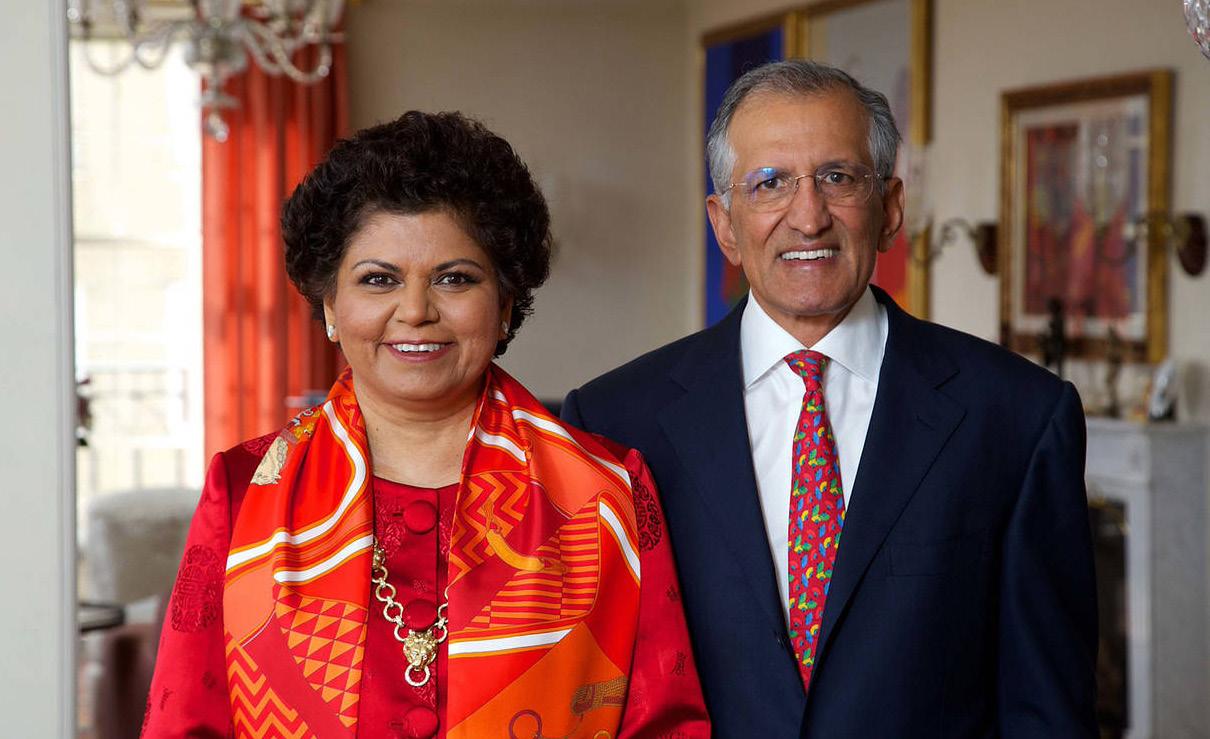
$1 Billion for the future
On November 30, 2022, NYU President Andrew Hamilton announced that the University was committing an ongoing $1 billion investment in Tandon to significantly advance engineering at NYU by recruiting 40 new fulltime tenure track faculty, fueling groundbreaking research, and growing and modernizing its Downtown Brooklyn campus. The funding will fuel basic and applied research in key interdisciplinary areas of global import — secure wireless ecosystems and supply chains, health engineering, sustainable engineering, and data science to improve the human condition.
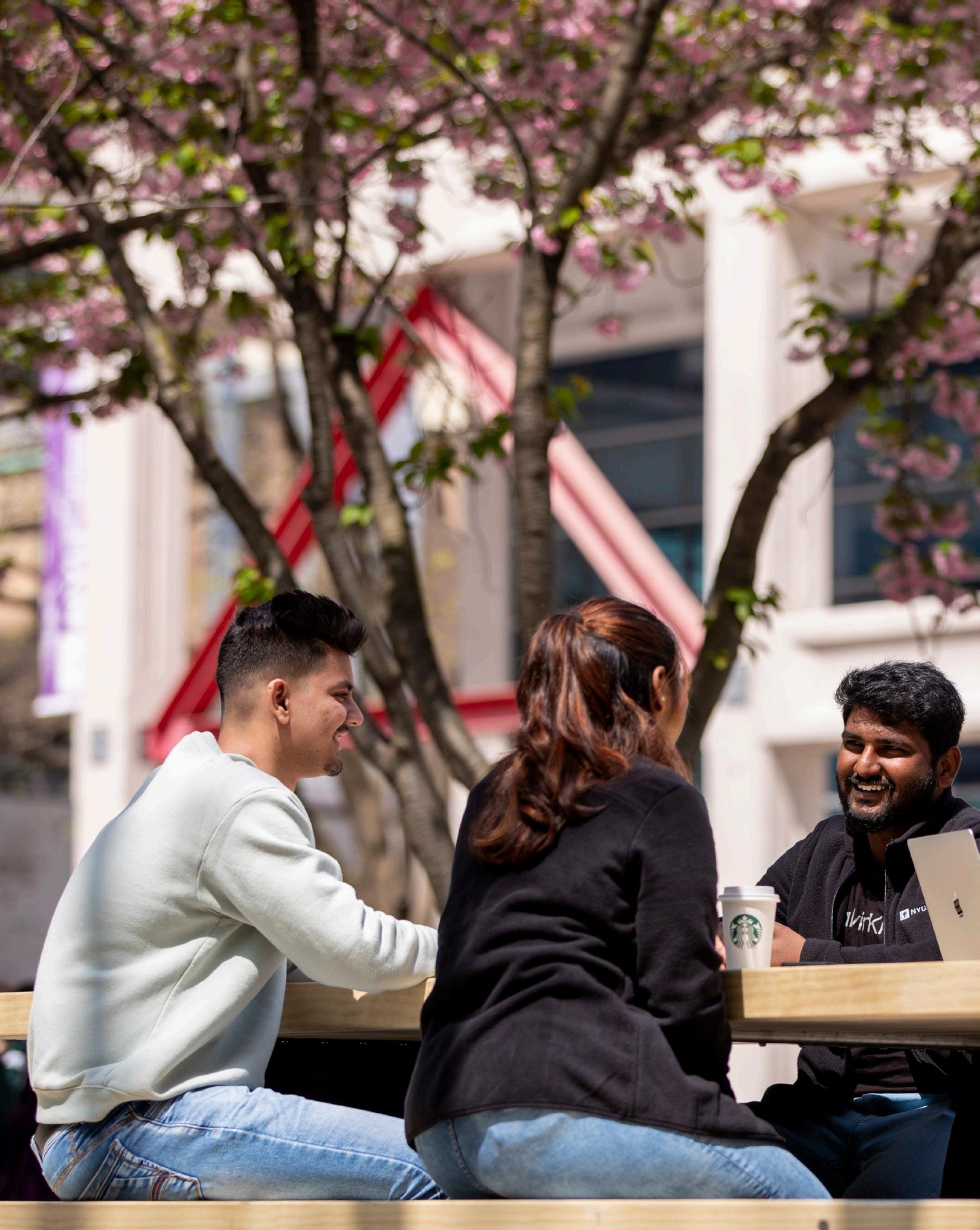

NYU’s $1 billion comprises $600 million in previous funding with additional planned future funding of another $400 million in operating budget growth plus capital investments in new and renovated facilities, including the purchase of a new building, 3 Metrotech. The funding will allow Tandon to increase its tenured and tenure-track faculty by nearly 50% with a particular focus in key disciplines for which Tandon is globally recognized and to maximize space for research, study, student life, and collaboration.
Planning for the specific uses for 3 MetroTech is in its earliest stages, but will build on additional plans for renovating 6 MetroTech — Rogers Hall — and lab spaces in the medical corridor in Manhattan, all of which will enable expansion of new interdisciplinary, collaborative lab and research spaces for robotics, biomedical engineering, chemical and biomolecular engineering, and nanofabrication, as well as space to accommodate large growth in experiential learning opportunities.
3
MILLION DOLLAR IDEAS
Tandon researchers are working at the cutting edge of technology across the entire engineering field. And big ideas need big funding. Multiple projects from our researchers earned grants over $1 million, including:
million total commitment that includes $10 million from the U.S. Department of Transportation for C2SMARTER to continue its work as a Tier 1 University Transportation Center, leading a consortium of universities that will address the U.S. DOT’s priority for reducing traffic congestion.

million from the National Science Foundation (NSF) for the Terahertz (THz) Measurement Facility, a laboratory to support basic measurements of devices, circuits, materials, and radio propagation channels at the highest reaches of the radio spectrum.
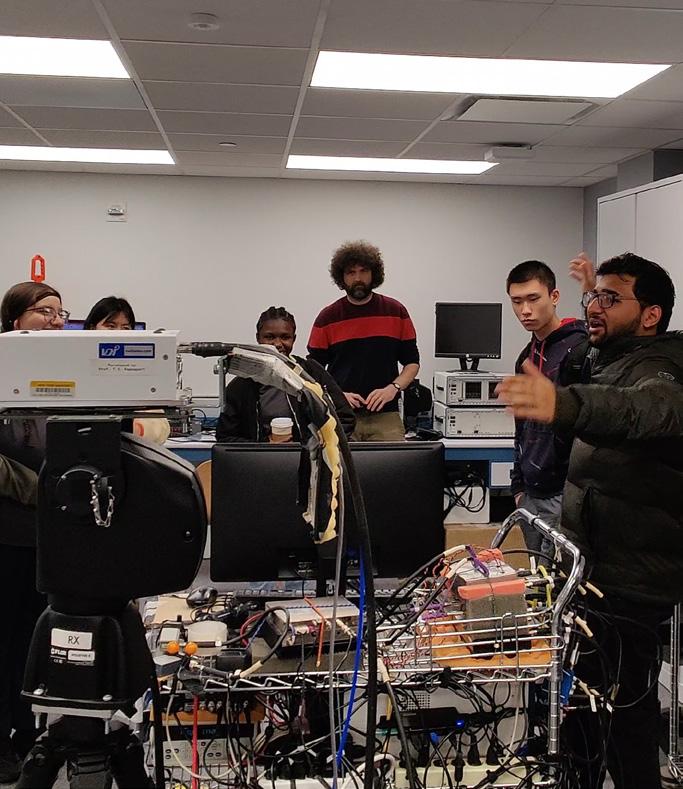
2
million from DARPA to develop approaches for real-time measurements of auxiliary signals that can be used to detect the existence of malicious/anomalous elements such as kernel rootkits, ransomware, and keyloggers.

NYU TANDON UNCONVENTIONAL ENGINEER VOL. 4 4 15
3
1.9 million from the United States Department of Energy to develop methods of securing the U.S. power grid from hackers and help the grid survive and recover quickly from cyberattacks.


1.3
1.4
million from the National Institutes of Health to
1.3
million from the New Jersey Institute of Technology million from the NSF to study the Intermeshed Steel
to understand how highly plastic collective systems regulate themselves in the face of changes, and unravel how information transfer between individuals and their contribution to the emergence of a functional, distributed regulation network, all using energetic regulation in ants as a model.
1.2 1
million from the NSF to develop new technologies
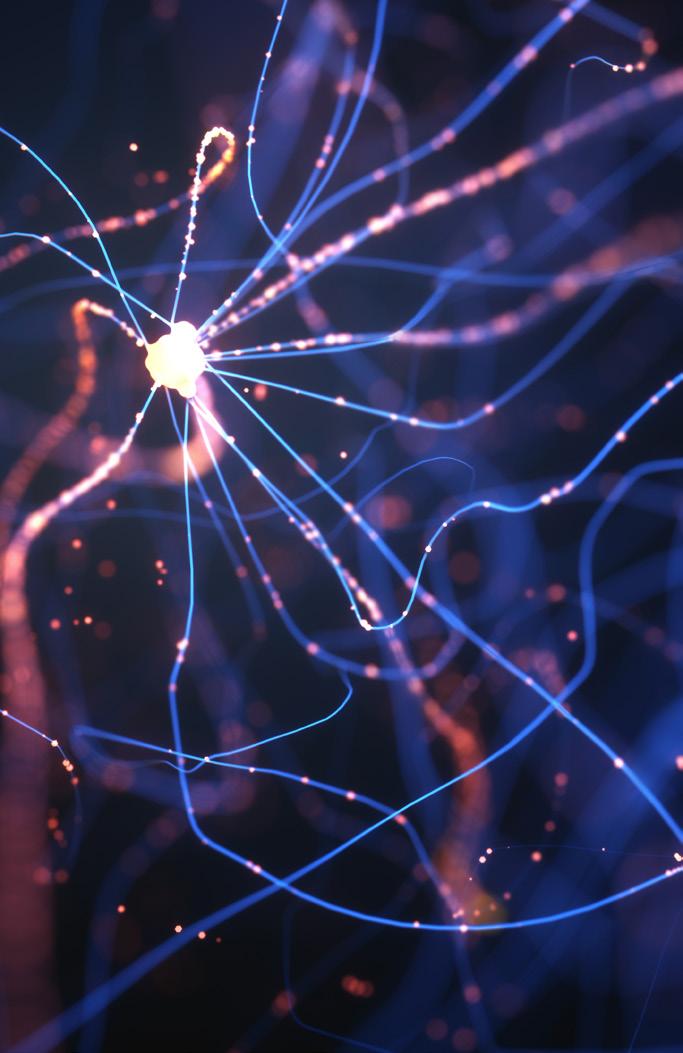
to secure the “digital legal supply chain” — the processes by which official laws and legal information are recorded, stored, updated and distributed electronically
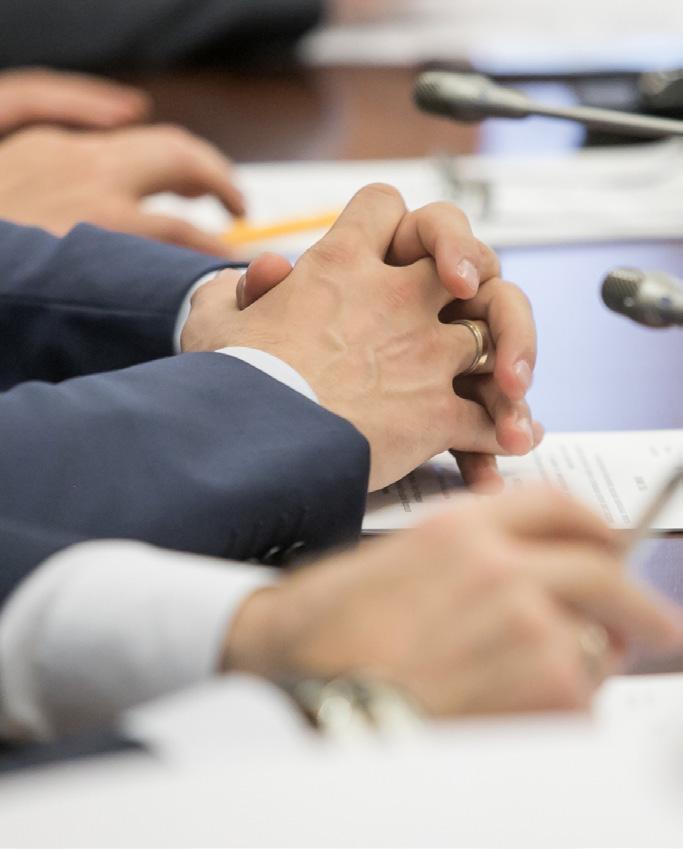
million from the NSF to develop better perception and navigation for the study programmable dendritic cells and their potential uses in immunotherapy.
Connection as a new quick, snaptogether connection to construct buildings with the existing work force and possibly on-site robotics. The research unites microeconomists, robotics experts, and computer scientists with structural engineers and site-safety leaders in the United States, Northern Ireland, and the Republic of Ireland. robots used to monitor construction job sites.

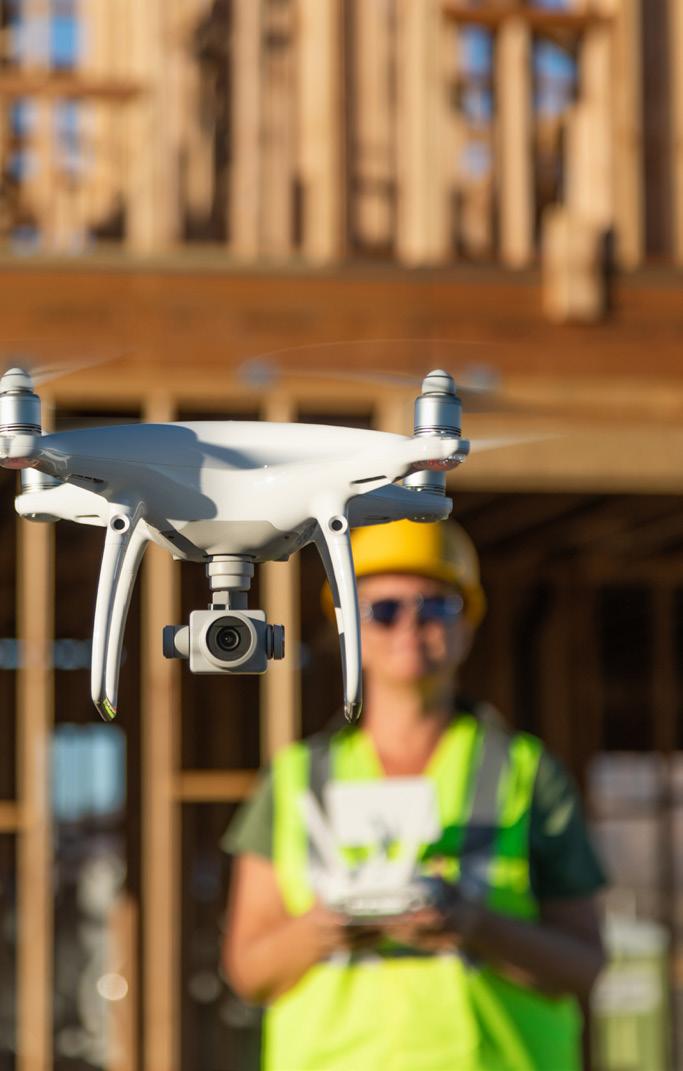
5
RESEARCH AND DEVELOPMENT
Machine learning is changing the way researchers design their experiments, creating big insights from small data sets.
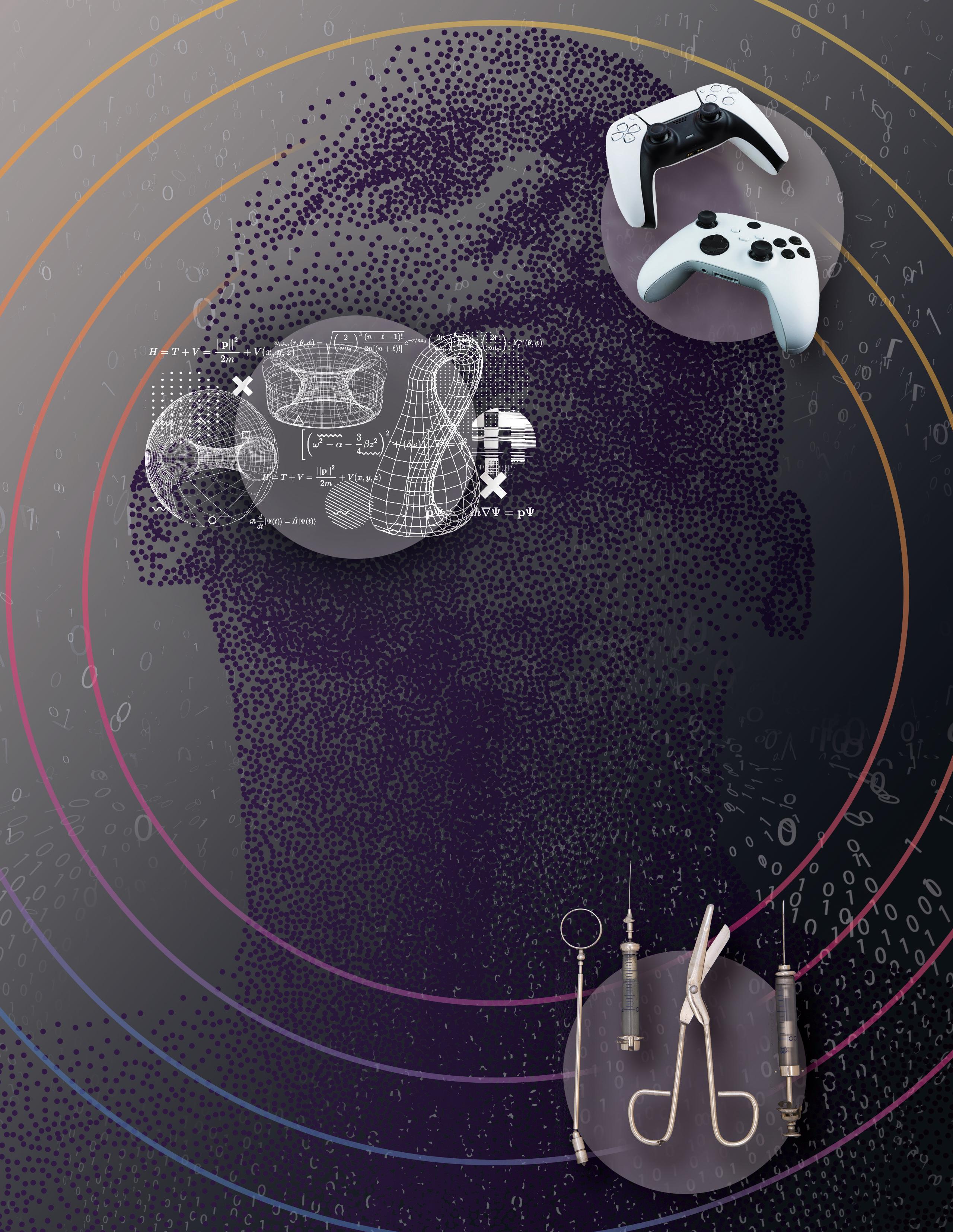
THE FUTURE OF GAMING
AI isn’t limited to non-player characters anymore. It’s becoming a key part in designing and building games too.
AI: THE PROMISES AND THE PITFALLS OF THE BIGGEST STORY IN TECH
If you’ve read the news this year, you know the topic on everyone’s mind: AI. With the launch of publicly-available large language models (LLMs) and image generation software, many people were able to experience the power — and the limitations — of machine learning algorithms.
Here at NYU Tandon, AI has long been a focal point of our researchers’ work, from examining how it will change hardware and software design, to how it can be used in the future of medical care, to how it can be used (and misused) in some of the most important processes in your life.
We asked a few of our researchers how they saw AI changing their research, and how its potential may change their field in the future.

INTELLIGENT HEALTHCARE
Algorithms and machine learning are improving human health, from COVID-19 to stroke to prosthetics.
Creating responsible AI that works for everyone
As AI begins to infiltrate many of the key parts of our lives — including law enforcement, job hiring, housing, and much more — there is no more pressing moment than now to ensure that the use of AI is ethical and equitable.
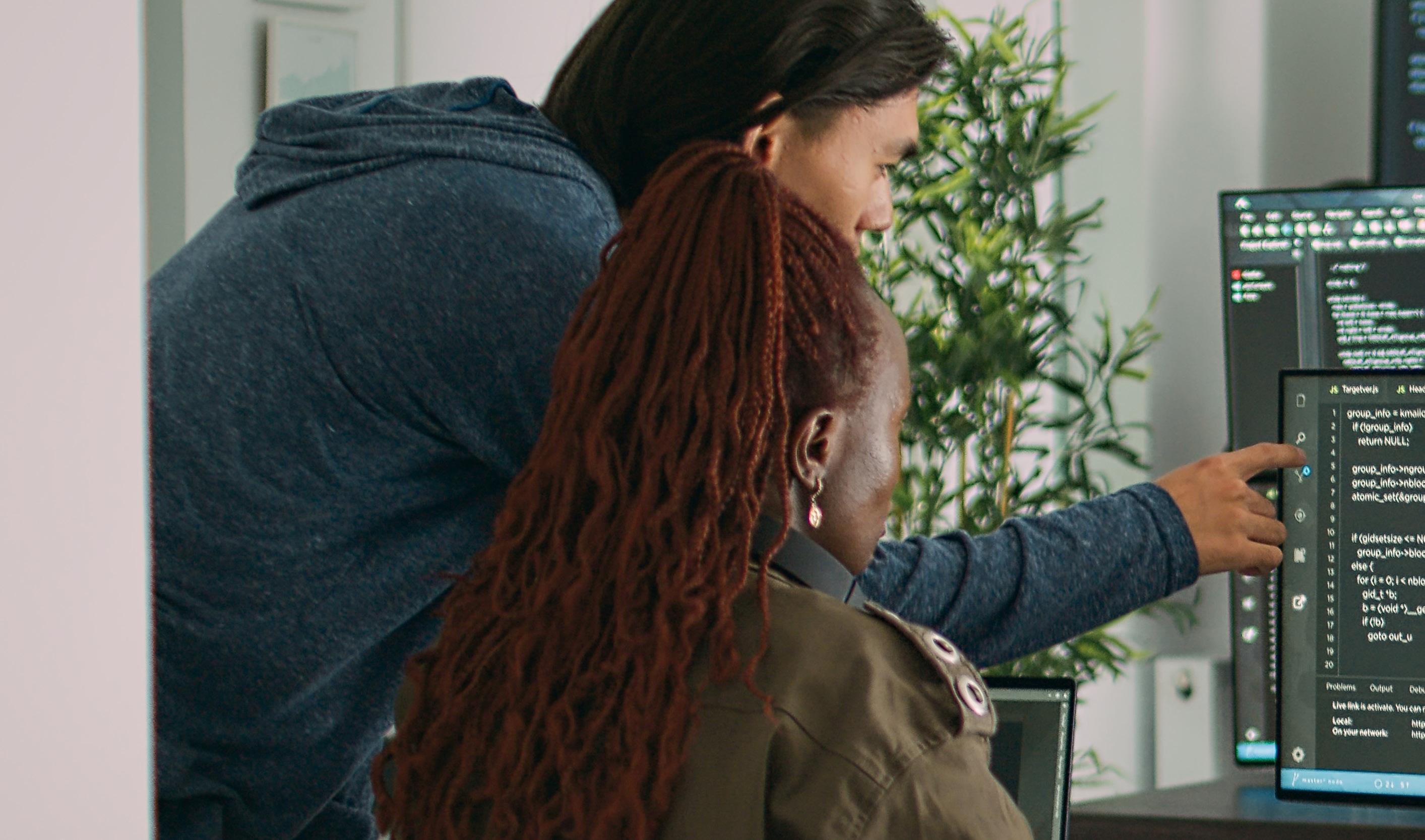
This year, Julia Stoyanovich — Associate Professor of Computer Science and Engineering and Director of the Center for Responsible AI — testified before the New York City Department of Consumer and Worker Protection regarding a first-of-its-kind law mandating transparency and bias protections for automated hiring tools.

Stoyanovich, whose research focuses on making AI responsible and equitable, and her colleagues had previously actively participated in guiding NYC on the development of Local Law 144 — which passed in 2021, and went into effect this year. The law will force employers who use automated employment decision tools to commission independent bias audits, publish a summary of the results, notify applicants
and employees of the tool’s use and functioning, and let affected individuals know they may request an accommodation or alternative selection process. Now, she’s looking to help ensure AI is used ethically in any number of cases. This year, the Center for Responsible AI partnered with New York City’s libraries on a “We Are AI” curriculum that teaches the fundamental of AI and ethics, just one example of how academics can teach the public about AI and its potential abuses. These educational opportunities — free of charge and available in public spaces — are aimed at creating a populace informed about AI and how it affects each of their lives, and giving them the tools to ask the right questions and fight for a more equitable society.
NYU TANDON UNCONVENTIONAL ENGINEER VOL. 4 8
Julia Stoyanovich
My prediction for the hopefully not-too-distant future is that we will find a way to make the use of AI socially sustainable. That we will collectively find a way to use this amazing technology for good — for the benefit of many people, and of many different kinds of people — while controlling the risks. To reach social sustainability, we will have to change how we think about AI innovation. It’s no longer technology first, society second. Technology is the easy part. The hard part is: ethics and values, laws and regulations, and training and education for all, so we can use AI productively and control it together!
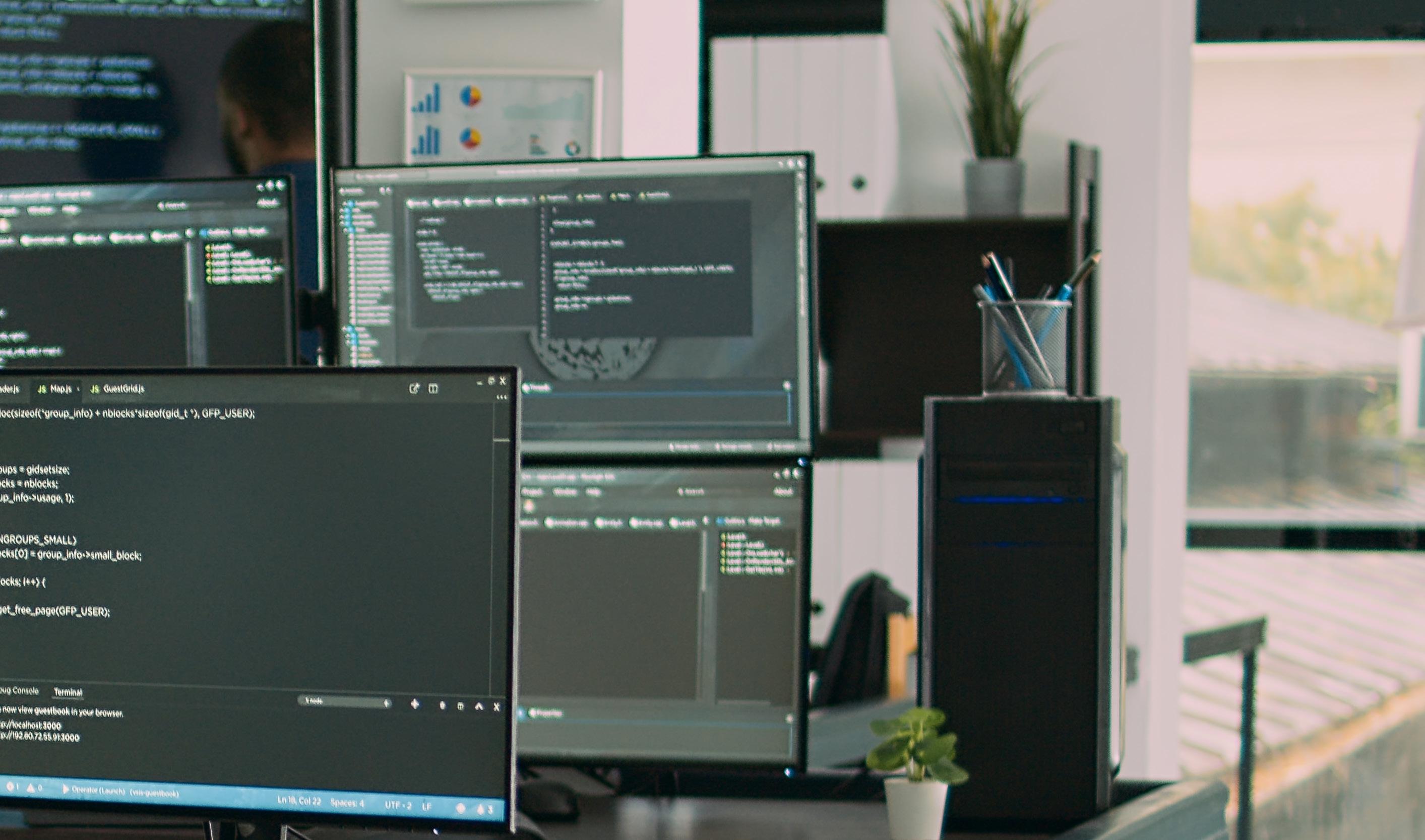
9
S. Farokh Atashzar
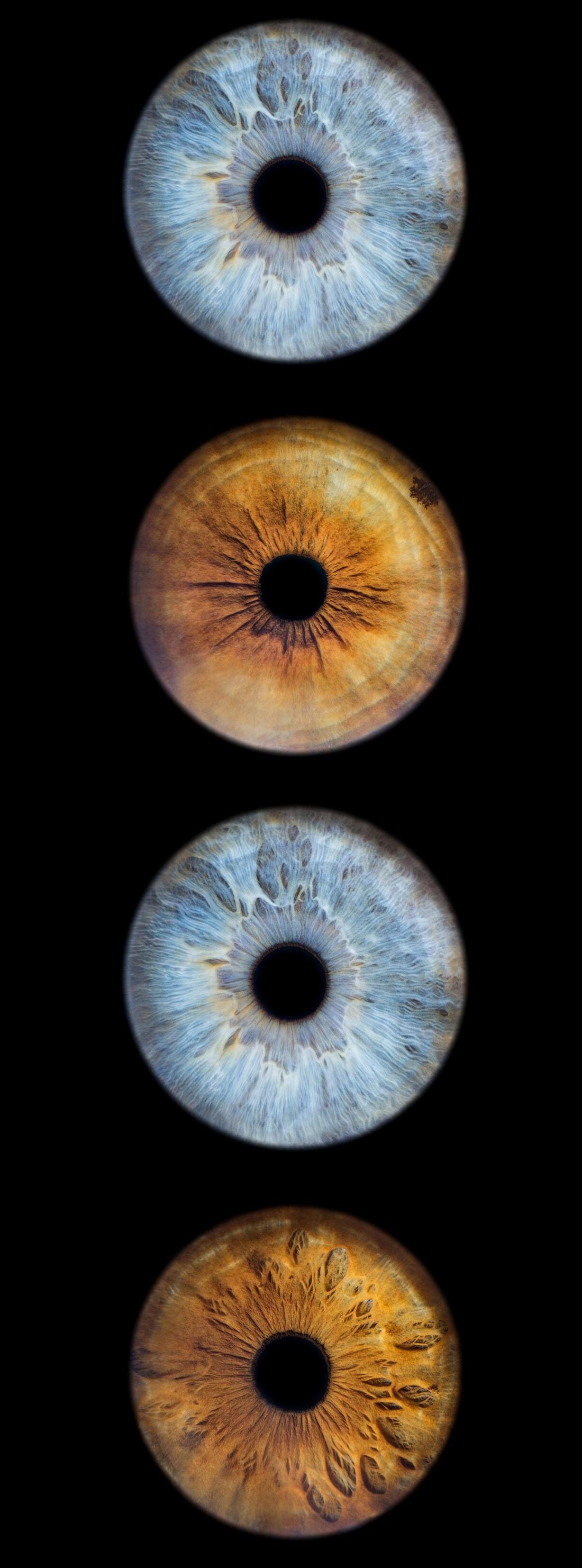
The AI Powering Medical Tools
Stroke is the leading cause of age-related motor disabilities and is becoming more prevalent in younger
populations as well. But while there is a burgeoning marketplace for rehabilitation devices that claim to accelerate recovery, including robotic rehabilitation systems, recommendations for how and when to use them are based mostly on subjective evaluation.
S. Farokh Atashzar, Assistant Professor of Electrical and Computer Engineering and Mechanical and Aerospace Engineering, as well as a member of NYU WIRELESS and the Center for Urban Science and Progress, is collaborating to design a regulatory science tool based on data from biomarkers in order to improve the review processes for such devices and how best to use them; another project, called EyeScore, tackles the issue of strokes through a different lens, by developing a technology that uses non-invasive scans of the retina to predict the recurrence of stroke in patients. Both processes utilize AI to analyze the data and draw out inferences and connections that may be beyond human observers.
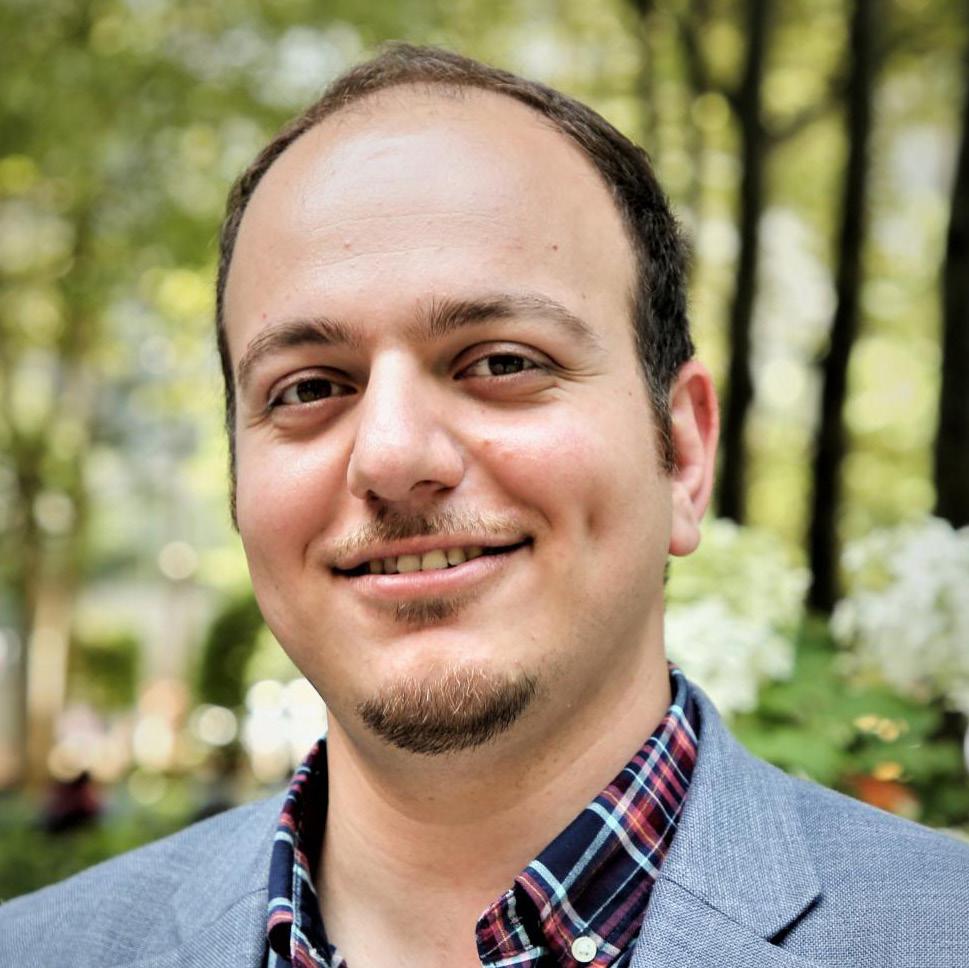
Atashzar’s latest project uses AI to analyze data from COVID-19 patients to predict whether their condition will worsen in the next 24 hours. Thanks to his AI model, he needs only a few inputs — heart rate, body temperature, and oxygen saturation — that can easily be collected by a wearable device. This would give patients and their doctors advanced warning about whether they can be discharged from the hospital, or if they should be seeking further medical attention.
“Imagine a world where AI seamlessly combines with medical robotics, opening up a universe of untapped potential. This blending amplifies the power of cognitive intelligence and self-directed action, presenting solutions to the complex healthcare challenges that often leave conventional methods struggling in areas
with limited resources and particularly in catering to the needs of our aging society. Over the last decade, the ascent of AI has reshaped innovation across a multitude of sectors, with healthcare standing out prominently.”
Video games, design, and AI
If one were to draw a Venn diagram with a domain for games and a domain for computer science/ AI, the overlap would be huge. The Game Innovation Lab at NYU Tandon is mining that fertile ground by exploring the symbiotic relationship between video and digital games and AI. The implications go far beyond avatars and joysticks: the work done at the Lab could lead to profound innovations in automated systems able to run processes for everything from building HVAC systems to global shipping.
The Lab, under the leadership of Julian Togelius — Associate Professor of Computer Science and Engineering — is a hotbed of research into how games can help
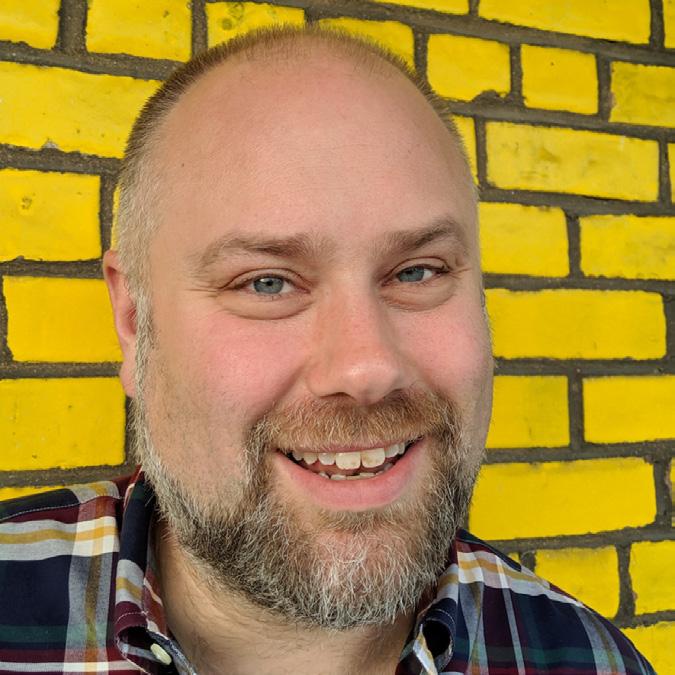
deep neural networks learn and how AI can help game developers automate expensive and time-consuming aspects of game development — and make new types of games possible.

The researchers’ work on how to use automatic generation of gameplay and levels to create more general game playing has put the Lab at the vortex of a virtuous cycle: smarter, more flexible machine learning systems that can play games can also help design them level by level, as well as personalize the playing experience for each player in real-time and automatically generate tutorial content.
“AI is transforming gaming in a number of ways. The first is testing, which is a huge bottleneck for games in order to optimize performance, and we’ll likely see AI be able to make huge advances in testing games in the future. Another possibility is introducing AI non-player characters that can react to your inputs organically — though it may take a while to create games that can respond in that way. And one of the biggest goals is to design games that can react to your own inputs — your own playstyles and personality — and redesign themselves around the user’s preferences. That’s something I’ve been working towards for a long time.”
11
Julian Togelius
AI’s role in fundamental science
AI’s potential role for the public is obvious. With advancements in language and art applications, it’s clear how individuals can harness AI for personal use. But AI is already being utilized in the scientific field itself. Take Miguel Modestino, the Donald F. Othmer Associate Professor of Chemical Engineering in the Chemical and Biomolecular Engineering Department as well as the Director of the Sustainable Engineering Initiative at NYU Tandon.
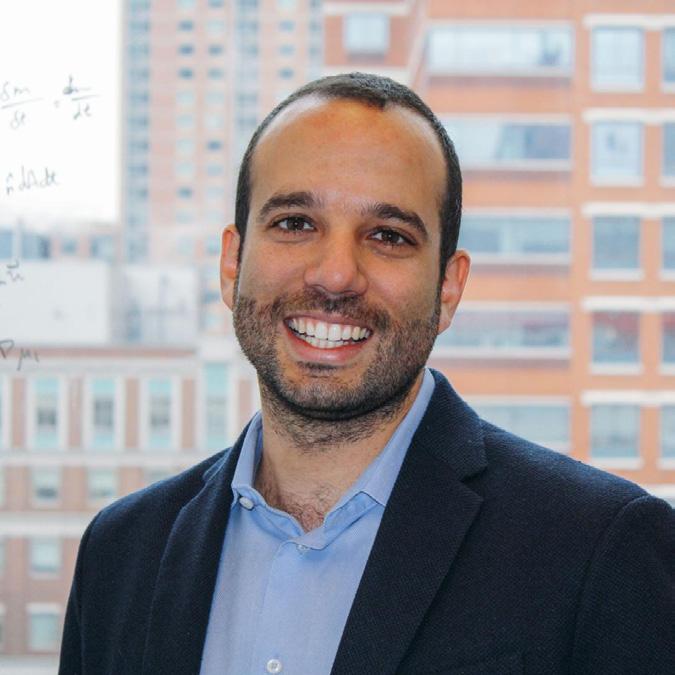
His research lies at the interface of multifunctional material development and electrochemical engineering. Electrochemical devices are ubiquitous to a broad range of energy conversion technologies and chemical processes. Their core components rely on complex materials that provide the required electrocatalytic activity and mass transport functionality.
His group has expertise in composite materials development, processing and characterization, and this expertise is used to improve and redefine
electrochemical reactors with direct industrial applications. They are also using machine learning to enhance their own experiments, using data they collect to feed into their models and extrapolate findings that would otherwise require significant time and energy to manually acquire.
“It is exciting to see so much enthusiasm about AI, but it is even more exciting to see how AI is expanding across all science and engineering disciplines. It was uncommon to find AI techniques in Chemical Engineering until the late 2010s, and it is remarkable to see how these tools have started to percolate throughout our field.
“In our research, we have used machine learning tools to identify efficient sustainable chemical processes, to find optimal trade-offs between energy efficiency and productivity in hydrogen production systems, to substantially improve CO2 upconversion technologies, and even our student entrepreneurs have created commercial tools to make AI tools mainstream in the chemical industry. This is just a sample of AI applications that can help us accelerate the creation of sustainable engineering technologies, and step-by-step help us reach our decarbonization goals by 2050.”
Chip Chat: Designing microchips with the help of LLMs
Designing microchips can be a laborious process, requiring specialized skill in manufacturing language.
This year, researchers at NYU Tandon including Siddharth Garg, Institute Associate Professor of Electrical and Computer Engineering and a member of NYU WIRELESS, as well the Center for Cybersecurity have fabricated a microprocessing chip using plain English “conversations” with an AI model, a first-of-itskind achievement that could lead to more democratized and faster chip development and allow individuals without specialized technical skills to design chips.
The team showed how hardware engineers “talked” in standard English with ChatGPT-4 — an LLM built to understand and generate human-like text type — to design a new type of microprocessor architecture. The LLM was able to turn that into Hardware Description Languages (HDLs), Verilog being one example, to create the actual circuit elements that allow the hardware to perform its tasks. The researchers then sent the designs to manufacture.
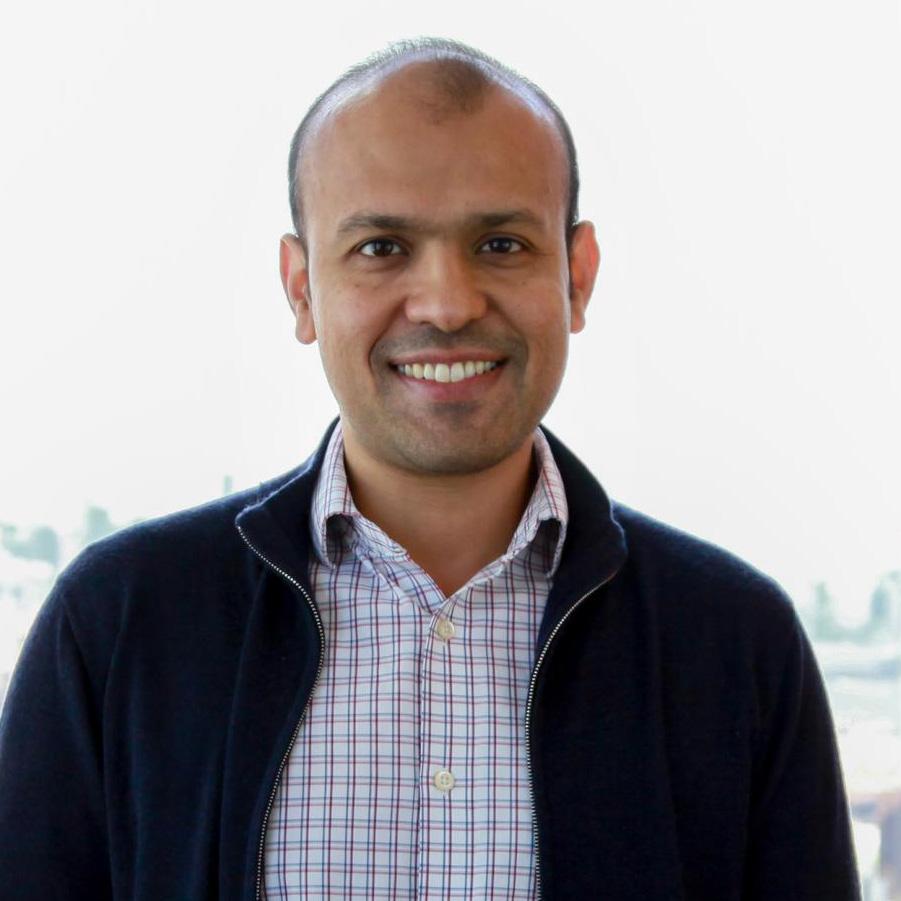
NYU TANDON UNCONVENTIONAL ENGINEER VOL. 4 12
Miguel Modestino
Siddharth Garg
The process they developed could also eliminate the need for HDL fluency among chip designers, a relatively rare skill that represents a significant hurdle to people seeking those kinds of jobs.
“Right now, I’m most excited about the use of machine learning to improve the efficiency of chip design to
allow people to design better chips faster. There’s a huge opportunity to use large language models and reinforcement learning to enable this. I would like to see, in 10 years, tools that would allow even a biologist who has no prior expertise in chip design to be able to bring to life their new idea, in silicon.”
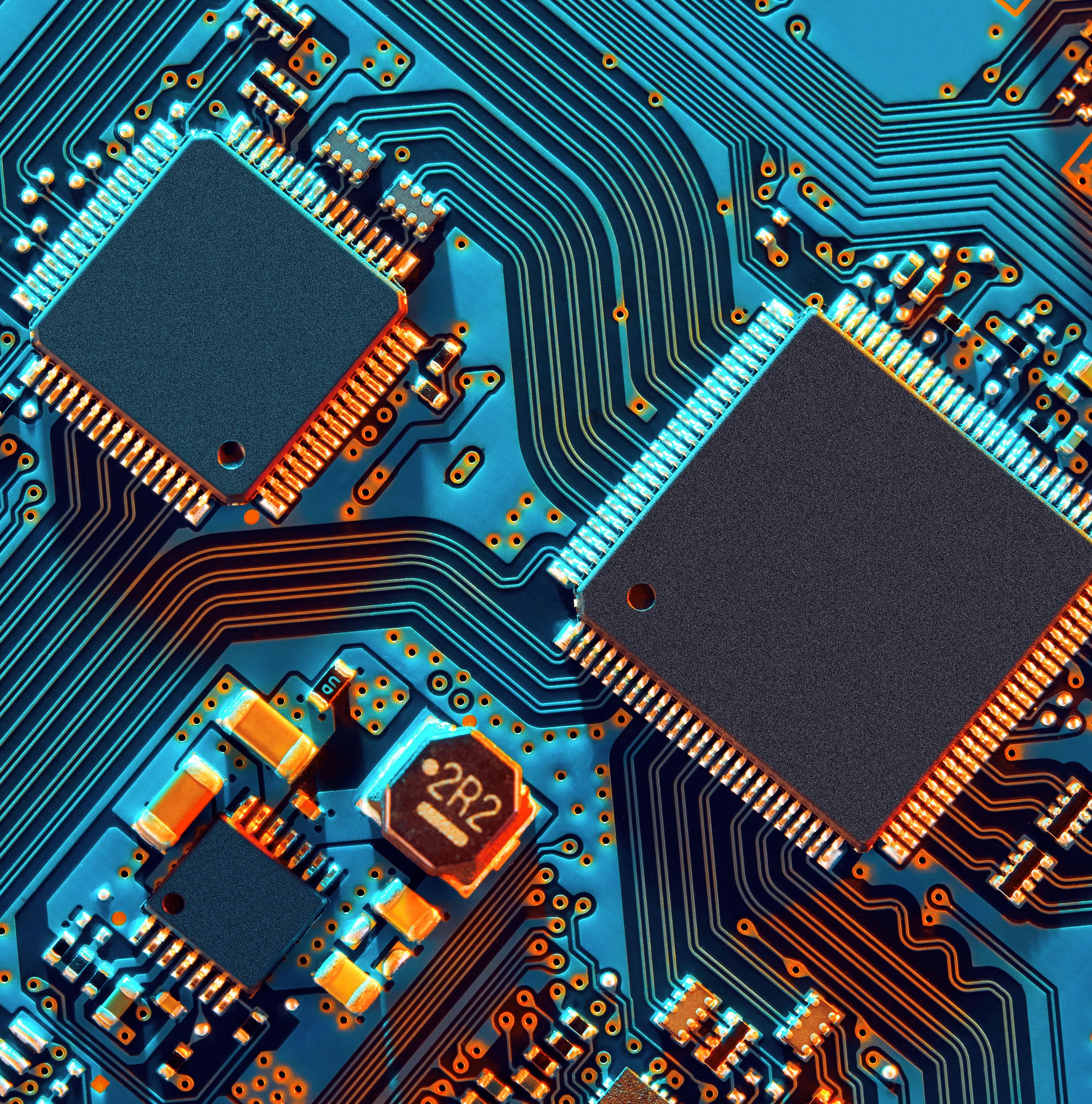
13
BRAIN-MACHINE INTERFACE
Technologists are taking on problems affecting the most complicated object in the known universe: the human brain.
YOUR GUT MICROBIOME
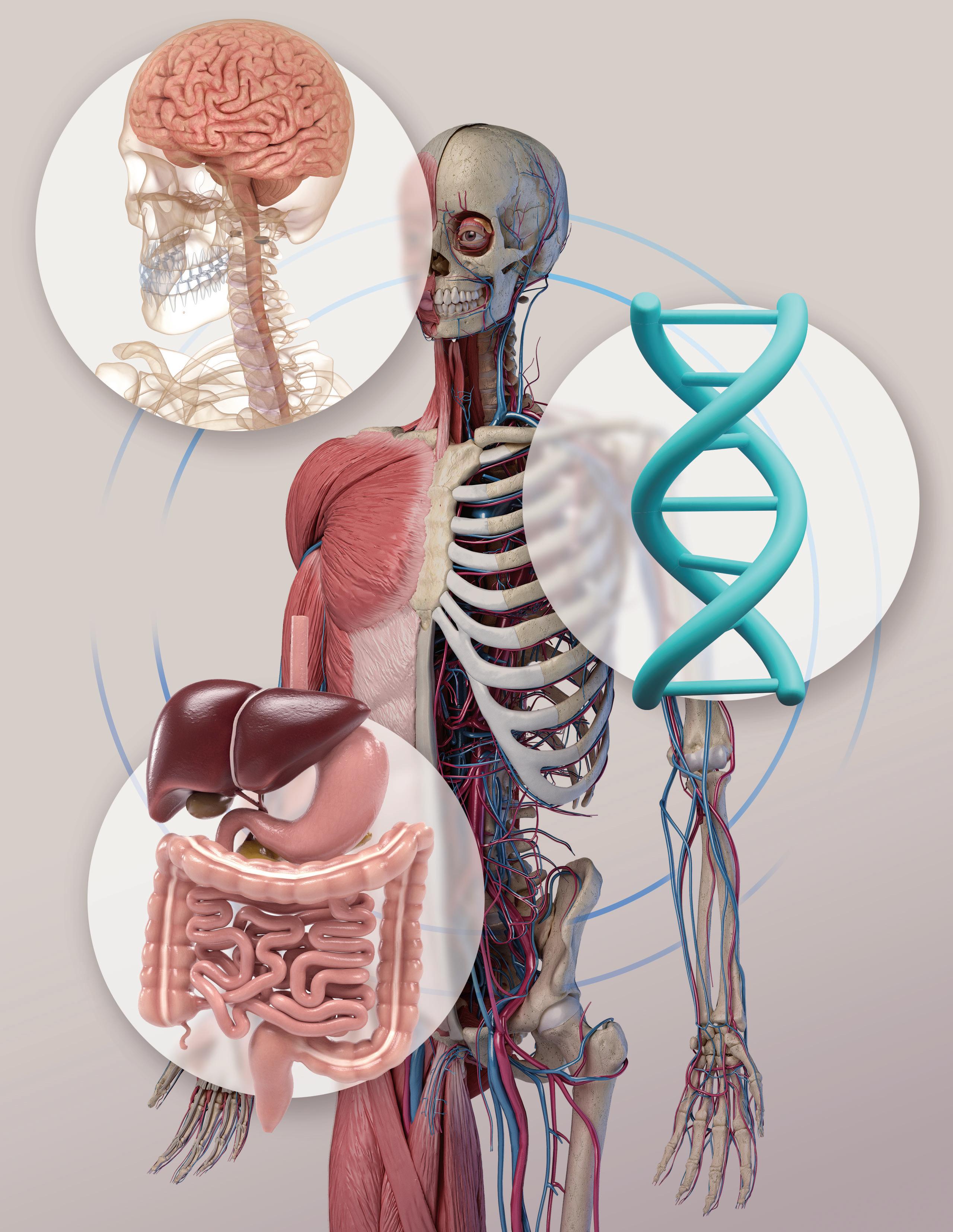
To treat everything from neurological disease to eating disorders, go with your gut.
GENETIC ENGINEERING
Tandon researchers are modifying the building blocks of life to treat deadly diseases and disorders.
THE ENGINEERS IN THE EXAM ROOM
Your brain on engineering
The human brain is the most complicated object in the known universe: 171 billion cells, among them 86 billion neurons, arranged in an interconnected electrochemical network that, even after a century and a half of study, still includes untold mysteries. The brain’s ripeness for new discoveries makes it a tantalizing canvas for engineering, and researchers at NYU Tandon are diving in.
Take stress, for example. Rose Faghih, Associate Professor of Biomedical Engineering, has been working for the last seven years on a technology that can measure mental activity using electrodermal activity (EDA) — an electrical phenomenon of the skin that is influenced by brain activity related to emotional status. Internal stresses, whether caused by pain, exhaustion, or a particularly packed schedule, can cause changes in the EDA — changes that are directly correlated to mental states.
The overarching goal — a Multimodal Intelligent Noninvasive brain state Decoder for Wearable AdapTive Closed-loop arcHitectures, or MINDWATCH, as Faghih calls it — would act as a way to monitor a wearer’s mental state, and offer nudges that would help them achieve a more neutral state of mind. For example, if a person was experiencing a particularly
severe bout of work-related stress, the MINDWATCH could pick up on it and automatically play some relaxing music.

The broader impact and applications of the methodology include performance monitoring, mental health monitoring, and measuring pain and cognitive stress. Mental health tracking like that enabled by MINDWATCH could pave the way to better management of autism, post-traumatic stress disorders, excessive irritability, suicidal tendency, and more.
While Faghih studies healthy brains in action, Tandon researchers are also setting their sights on diseased or damaged brain states, in the hope of preventing serious injury and ensuring the continued health of individuals.
Working alongside a team at NYU Grossman School of Medicine, researchers led by Junbo Chen, a doctoral candidate in Tandon’s Electrical and Computer Engineering department, developed an AI computer program that processes MRI results and can accurately identify changes in brain structure that result from repeated head injury.
Experts have long known about potential risks of concussion among young athletes, particularly
for those who play high-contact sports such as football, hockey, and soccer. Evidence is now mounting that repeated head impacts, even if they at first appear mild, may add up over many years and lead to cognitive loss.
While advanced MRI identifies microscopic changes in brain structure that result from head trauma, researchers say the scans produce vast amounts of data that are difficult to navigate, and the damage is not picked up by other brain scans.
The new tool, using machine learning, accurately distinguishes between the brains of male athletes who played contact sports like football versus noncontact sports like track and field. The results linked repeated head impacts with tiny, structural changes in the brains of contactsport athletes who had not had a concussion diagnosis — changes so tiny, they would be missed by experienced doctors reading the scans themselves. And as the machine was fed more data, it learned to pick up these changes even more accurately and quickly, making it a potent tool in assessing potential long-term damage from contact sports and other repetitive brain injuries earlier than is possible today.
It takes guts
Diarrhea. Constipation. Heartburn. Millions of people suffer from these painfully common conditions and often endure inconvenient and invasive medical procedures to diagnose the causes. That could soon change.
Khalil B. Ramadi, Assistant Professor of Biomedical Engineering at NYU Tandon, has developed a tiny pill-like electromagnetic device that, once swallowed, could provide medical professionals a diagnostic window into the inner workings of the gastrointestinal (GI) tract. The bluetooth-enabled device delivers a continual stream of data to a smartphone as it passes through the subject, using electromagnetic technology similar to what makes Magnetic Resonance Imaging (MRI) machines work.

This breakthrough means that the more than one-third of the global population with irritable bowel syndrome and other disorders related to motility — the functioning of muscles and nerves in the GI tract — could avoid standard diagnostic procedures like computerized tomography (CT) scans, X-rays or endoscopic tubes inserted through the nose or other
entry point. Those procedures can be physically and mentally uncomfortable, rely on potentially harmful radiation, and demand patients spend considerable time inside medical facilities.
Instead, the ingestible radiation-free microdevice would require only that people keep close to electromagnetic coils as the device makes its way through their bodies. The coils could be worn in a backpack or jacket, so patients could go about their normal lives during the process.
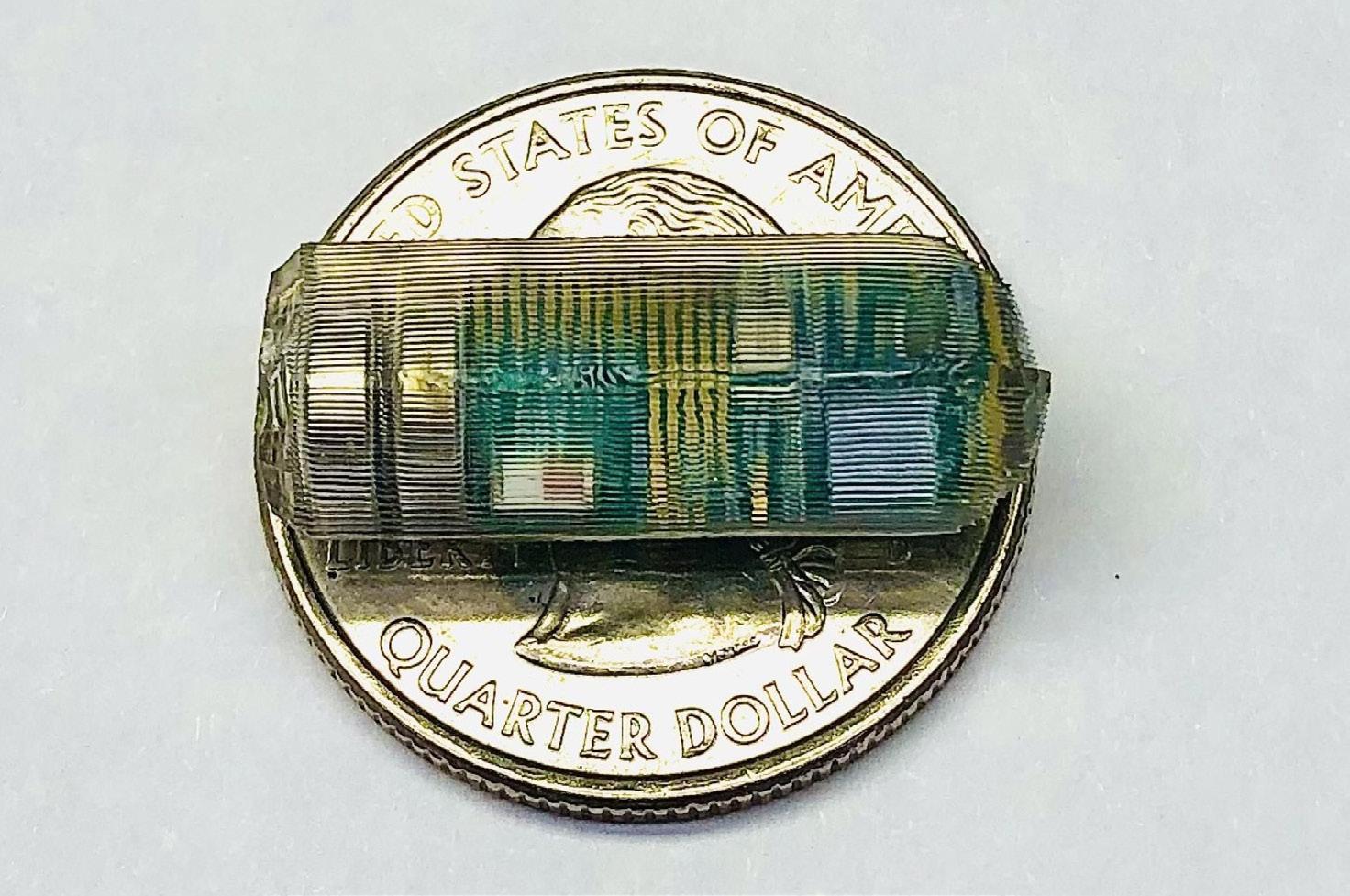
Ramadi is also working on similar electric pills that can interact with the brain through the brain-gut axis, the network of connections between the two organ systems. It would allow doctors to activate areas of the brain without direct stimulation or surgery, and may open up avenues of treatments for several brain diseases and disorders.
Good genes
With advancements like CRISPR, genetic engineering is entering its own renaissance. But while most geneticists are focusing on a few thousand base pairs at a time, some researchers — like David Truong, Assistant Professor of Biomedical Engineering at NYU Tandon and Associated Faculty of Pathology at NYU School of Medicine — are thinking bigger. Truong is pushing
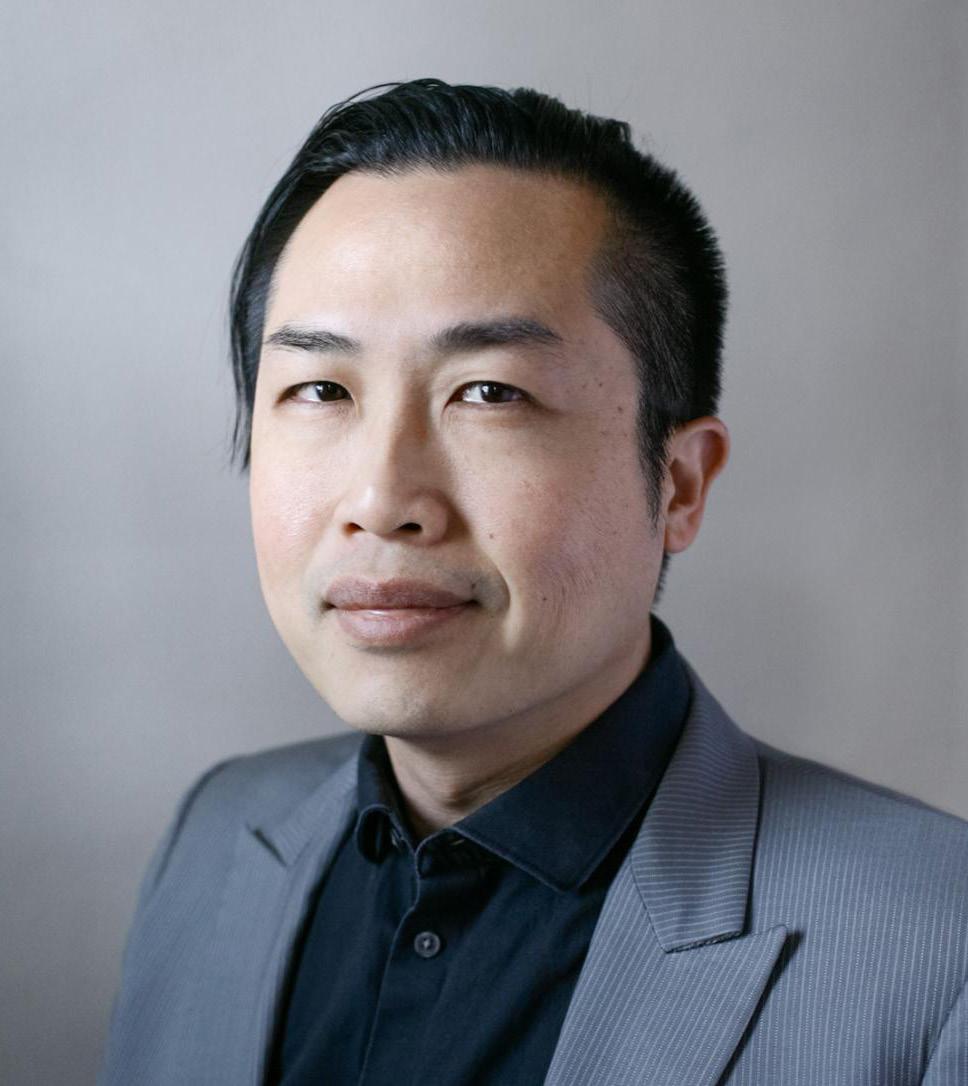
NYU TANDON UNCONVENTIONAL ENGINEER VOL. 4 16
An ingestible electromagnetic device that could reveal the inner workings of the gastrointestinal tract, on a coin for scale.
Khalil B. Ramadi David Truong
A healing gel
the boundaries of biomedical engineering when it comes to genetics, building the technology necessary to change not just thousands of base pairs at a time, but millions. And that engineering work could have profound implications for the future of healthcare.
The challenge he’s taking on is human induced Pluripotent Stem Cells (iPSCs), which have the potential to transform from an embryonic state into any type of cell needed. The problem is these cells can be highly personalized — cells harvested from one person might be rejected by another. Truong has created technology to swap out the genetic coding in these cells that personalized them to an individual, and swap in genetic code that matches potential patients.
With these changes, Truong and his team are turning iPSCs into cancer-fighting cells. T-cells, for example, can hunt down tumors, but they are susceptible to the self-defense mechanisms of the tumors themselves, which also involves shutting down the body’s surrounding natural immune system. With this technology, cells can be “trained” to get around those suppression mechanisms and turn the immune system around the tumor back on, recruiting the body’s natural defense system to help defeat the cancerous cells.

Truong is not the only Tandon researcher engineering cells for health solutions. Consider: If you cut yourself, you will probably heal readily, since skin cells have the ability to regenerate. That’s not true, however, of the more than two billion cardiac muscle cells in the human heart, since most of those cells, known as cardiomyocytes, lose the ability to divide soon after we are born. That means that someone who suffers a heart attack, for example, will not grow new cells to replace those that die.
Irene de Lázaro, Assistant Professor of Biomedical Engineering, who runs Tandon’s NanoBioEngineering for Tissue Reprogramming and Regeneration laboratory, is working to change that situation by investigating the mechanisms by which in-vivo reprogrammed cells contribute to regeneration; studying the impact of mechanical and biochemical controlled perturbations on cell plasticity and reprogramming; and engineering reprogramming factor delivery vectors that will allow for efficient, safe, and clinically translatable reprogramming.
In June 2023, Cresilon, a Brooklyn-based biotechnology company focused on hemostatic medical device technologies founded by NYU Tandon alum Joe Landolina (BS/MS ‘14), received the first FDA clearance for human use of the technology for its Cresilon Hemostatic Gel™ (CHG). The plant-based hemostatic gel technology rapidly controls bleeding when applied to a wound without the need for manual pressure, which makes it easy to use while working instantaneously to both stop and control bleeding at the point of care. The company’s current product line VETIGEL™ is in use for veterinary care, and the FDA clearance takes Cresilon further toward its future plans to save lives by targeting human trauma and surgical applications. Landolina, named to Forbes’ 2023 “30 under 30” list for healthcare, invented VETIGEL as a 17-yearold freshman at Tandon studying biomolecular and chemical engineering, and his strategic leveraging of NYU’s entrepreneurial support resources, including the NYU Entrepreneurial Institute and an entrepreneurial competition at NYU Stern, helped to build the early foundation for Cresilon.
17
Induced Pluripotent Stem Cells (iPSCs), illuminated with red fluorescence, that had 100,000 base pairs deleted. Photo credit: Minjoo Kim
SOCIAL MEDIA STRIFE
Hateful conduct online doesn’t confine itself online. Thanks to our research, we can see how it influences the physical world.
NEW WAYS TO VIEW YOUR CITY
Next time you go for a stroll through your neighborhood, take a moment to take in your surroundings. Observe the trees and buildings, hear conversations or children playing, feel the vibrations caused by cars, smell the (hopefully pleasant) smells. There’s a lot we can learn about a place just by being in it.
But maybe you want to dig a little deeper. You could go online to view building records, zoning permits, or sewage infrastructure. You can read the history of the area, read about it’s ecology, and plenty more. But here at NYU Tandon, we’re looking at your neighborhoods in a new, askew way — perspectives you may never have considered.
ILLUMINATING THE SUBWAY
For the visually impaired, navigating the maze of tunnels, ticket kiosks, and platforms of a subway stop is difficult. A new app can help.

HONEYBEES ON THE HUNT
To study the microbiomes of our environment, you need to survey a huge area. Who better to do so than a different kind of drone: bees.
SUBSURFACE SPAGHETTI
A complicated web of infrastructure — including electricity, waste, water and transportation — lies underneath our feet. See how we’re untangling it.

The “subsurface spaghetti” of city infrastructure
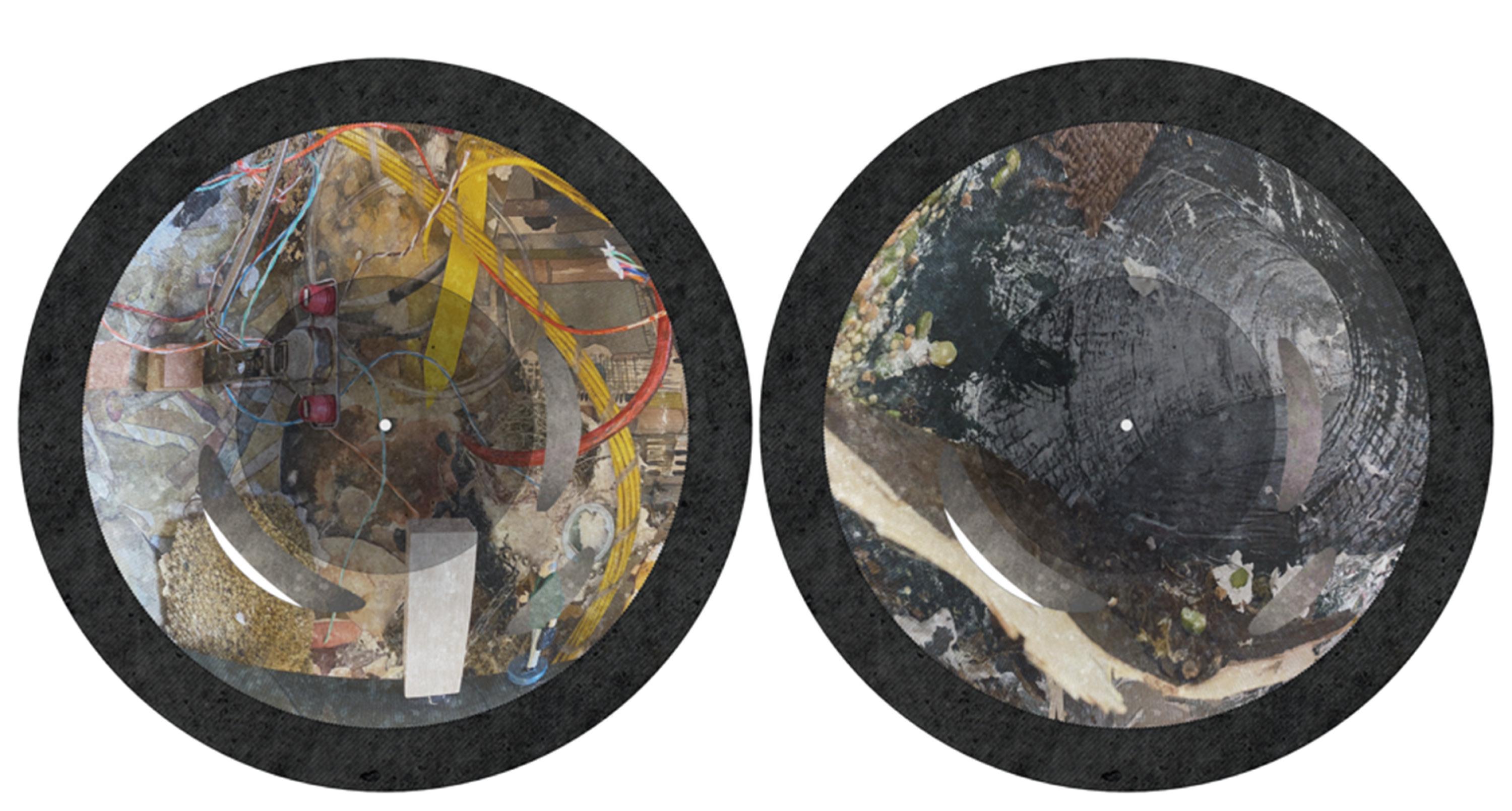
Extreme events caused by climate change, weather, and accidents can seriously affect the infrastructure we rely on, and that includes everything underground. In a dense urban environment like New York City, water and sewer networks, electricity, and transportation systems form an incredibly complex underground network of interlocking systems — like a pile of spaghetti on a plate.
Because this underground infrastructure is so interconnected, when something goes wrong, it can cause a domino effect, impacting things like power, water supply, transportation, and communication, which can have significant social and economic consequences for residents.
To deal with these challenges and make communities more resilient, Debra Laefer, Professor of Civil and Urban Engineering and a member of CUSP, is working on a project called UNUM: Unification for Underground Resilience Measures. The project will work with utility companies, city agencies and consultants to design a roadmap for city-level implementation of a subsurface data model and assemble two pilot data sets to prepare study sites against natural disasters. The goal is to

create a common understanding of the underground infrastructure and develop strategies to handle disasters and threats like sea-level rise.
The project is being piloted in two areas of New York City: Midtown East (Manhattan) and Sunset Park (Brooklyn), which have different underground conditions and diverse populations.
In the first stage of the project, over 40 stakeholders agreed to share their data through a repository managed by the city agency. Now, in the second stage, they are standardizing the data to make it compatible with each other and integrate it onto a common map for better analysis.
NYU TANDON UNCONVENTIONAL ENGINEER VOL. 4 20
Still from “Underground Periscope,” a multi-channel video installation that considers the underground as a living organism by showing underground utilities and infrastructure, thereby revealing the complex and often messy interconnected nature of what lies beneath.
Debra Laefer
By doing this, they hope to identify vulnerabilities, reduce accidents and emergencies, and strengthen the infrastructure to withstand natural disasters and other largescale threats.
Illuminating the subway
For the blind and visually impaired, navigating the complex network of tunnels, ticket kiosks, and platforms of a subway stop can produce a lot of anxiety and frustration. Because subway signs are typically graphical or textbased, they are especially
difficult to recognize from distances and reduces the ability to be autonomous in unfamiliar environments. But thanks to a new app from NYU Tandon researchers, that frustration may be alleviated in New York City.
Developed by John-Ross Rizzo, Associate Professor of Mechanical & Aerospace Engineering and Biomedical Engineering, as well as a member of NYU WIRELESS and CUSP, and a team that includes advisors from New York City’s Metropolitan Transit Authority (MTA), Commute Booster automatically figures out what signs a traveler will encounter along the way to a specific subway platform. Then, it uses a smartphone’s camera to recognize and interpret signs posted inside transit hubs, ignoring irrelevant ones and prompting users to follow relevant ones only.
In a recent study, researchers tested Commute Booster’s interpretation of signage from three New York City subway stations — Jay StreetMetrotech, Dekalb Avenue and Canal Street — that a traveler would encounter on a specific journey. The app proved 97 percent accurate in identifying signs relevant to reach the intended destination.
Testing inside those three subway stations also revealed that Commute Booster could “read” signs from distances and at angles that reflect expected physical positioning of travelers.
The Commute Booster system relies on two technological components. The first, general transit feed specification (GTFS), is a standardized way for public transportation agencies to share their transit data with developers and third-party applications. The second, optical character recognition (OCR), is technology that can translate images of text into actual editable text. These two technologies, when used in tandem with Commute Booster’s algorithm, can identify relevant navigation signs and locate the position of signs in the immediate environments.
New York City’s subway system has long had issues with accessibility, and Commute Booster is just one example of how technology can improve the outlook for people in the city who otherwise might struggle with tasks we take for granted.
The Future of Flooding

FloodNet, the first-ever New York City flood-monitoring network, received $7.2 million in city funding that will greatly increase the number of monitored flood-prone locations from 31 to 500 over the next five years.
The project uses sensors installed in flood-prone areas of the city, and can give several hours of advanced warning as water levels begin to rise.
In addition to the sensor network, FloodNet also provides a free, mobile-friendly web dashboard that allows New York City residents and other stakeholders to monitor and react to flood threats in real time. Launched on the one-year anniversary of Hurricane Ida, the dashboard displays data collected by FloodNet’s expanding system of low-cost, open-source sensors across the city’s five boroughs.
FloodNet — made possible with financial support from the C2SMART Tier 1 U.S. DOT Center at NYU Tandon, the NYU Marron Institute, and the CUNY Office of Research — was developed and tested over the past two and a half years by a group of environmental researchers from NYU Tandon and a number of other schools, and in partnership with the NYC Mayor’s Office of Climate & Environmental Justice, the NYC Office of Technology & Innovation, and neighborhood community groups.
 John-Ross Rizzo
John-Ross Rizzo
Racism, homophobia, mental health … and Twitter
Twitter (now known as X) may hold a key to pinpointing precise neighborhoods where systemic racism and homophobia have taken hold, allowing researchers to measure the mental-health impact on diverse groups of people who spend time in those places.
A team led by Rumi Chunara, Associate Professor of Computer Science and Engineering as well as NYU School of Public Health’s Biostatistics Department, divided up all of New York City into more than 200 geographic clusters — discrete areas, in some cases just multiple blocks — defined by the degree of racism and homophobia within each of those locations.
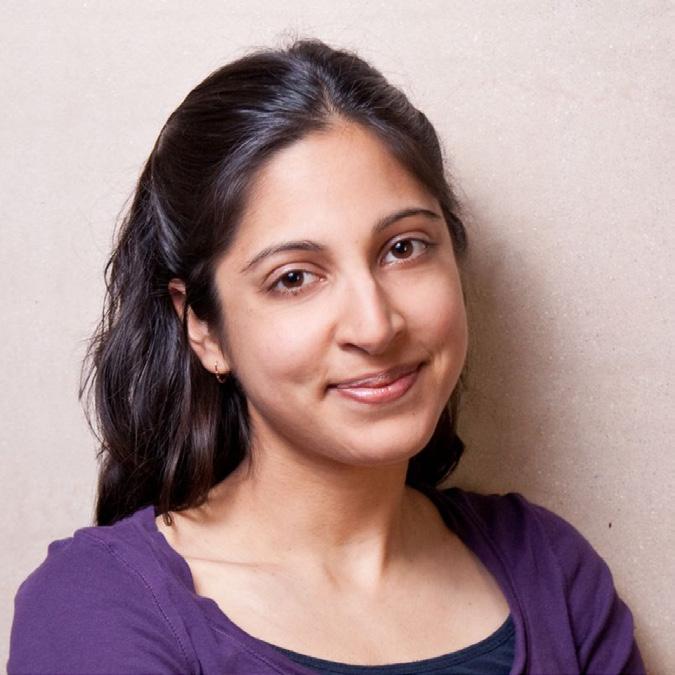
Unlike typical sources of demographic data, Chunara and her colleagues used Twitter as a proxy to measure nuanced “on the ground” negative sentiment that can permeate the cultural climate of specific locations.
The complex analysis required the team to develop and employ a novel technique called socio-spatial self-organizing maps (SS-SOMs), in which they applied a combination of keyword filtering, labeling, and iterative learning to Twitter posts generated in New York City. With the resulting data, they drew boundaries around small areas based on the similar racial and sexualorientation attitudes expressed in the postings.
For this project, the team built on that existing research by recruiting 147 young Black, white and Hispanic men in New York City who identify as gay or bisexual, to wear GPS tracking devices for a two-week period. The participants self-reported their mental health during that time, accounting for feelings like stress or depression.
All three data sources — Twitter sentiment, GPS tracking and self-reported mental health status — gave researchers the ingredients for a regression analysis that investigated how spending time in places with negative attitudes about race or sexual orientation affected the men’s mental well-being. Researchers also looked at whether the participant’s race or ethnicity affected this relationship.

NYU TANDON UNCONVENTIONAL ENGINEER VOL. 4 22
Structural racism and homophobia have been uniquely challenging to measure scientifically, and thus understanding their effects on health has been difficult. This type of Twitter data provides a foundation on which we can then research nuanced questions about the impact of placed-based negative sentiment in people’s lives.
Rumi Chunara
Mapping microbiomes with honeybees
Honeybees foraging in urban environments could provide valuable information about the communities of fungi and bacteria that exist there, some of which impact people’s health and well-being, a study published in Environmental Microbiome suggests.
Analyzing these complex groups of microorganisms — known as microbiomes — can require teams of volunteers to gather samples, a prohibitively time- and laborintensive process. Honeybees, because they forage daily in a twomile radius of their hives, provide an alternative method of sample collection that can, ultimately, allow researchers to create a microbial map of a city far more efficiently.
Elizabeth Hénaff, Assistant Professor in NYU Tandon’s Center for Urban Science and Progress (CUSP) and in the Department of Technology, Culture and Society, conducted a pilot study by sampling various materials from three hives in the New York City boroughs of Brooklyn and Queens. She found diverse genetic information in the debris accumulated at the bottom of the hives, including genetic data from environmental bacteria.
The study finds that hive debris analysis may also offer a way to surveil human pathogens in big cities. The researchers uncovered genetic material in the debris for the pathogen Rickettsia felis, which causes cat scratch fever in people.

Further sampling of hive debris in Sydney, Melbourne, Venice, and Tokyo, revealed that each neighborhood and city has a unique genetic signature as seen by honeybees.
The genetic data from Venice was dominated by fungi related to wood rot and date palm DNA, while Melbourne’s sample was dominated by Eucalyptus DNA. The sample from Sydney contained genetic data from a bacteria species that degrades rubber, and Tokyo samples included plant DNA from Lotus and wild soybean, as well as the soy sauce fermenting yeast Zygosaccharomyces rouxii.
So next time a honeybee lands next to you, consider what it may know before you shoo it away.
EXPLORING GUN VIOLENCE THROUGH DATA
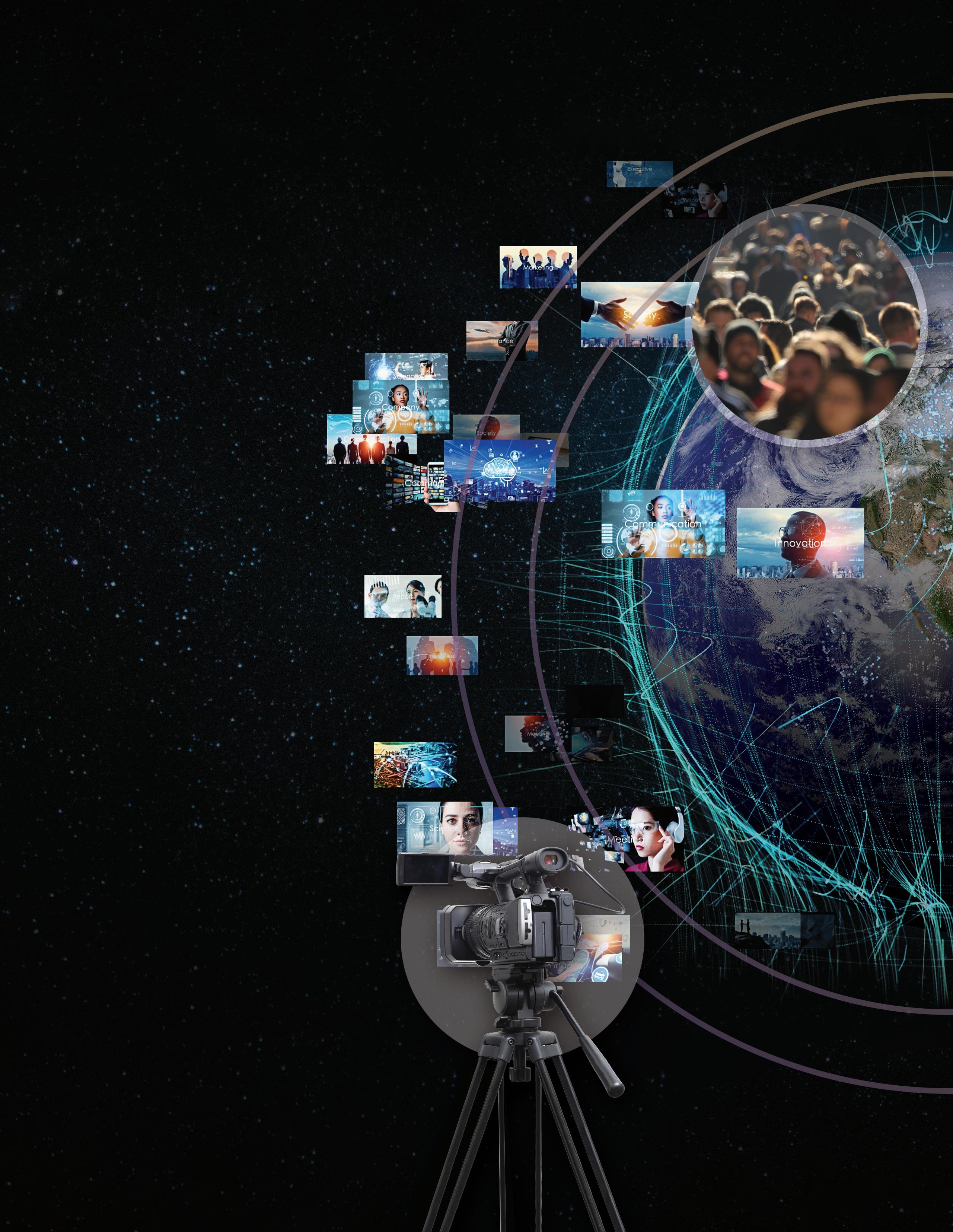
MEDIA COVERAGE
The news coverage of a shooting can be harmful itself. And the conventional wisdom about it is way off.
MENTAL HEALTH
Data science can help us track potential shooters and prevent them from accessing deadly weapons.
GUN LEGISLATION
As different states enact different laws around firearms, how can we track data from across a stratified country?

A new approach to understanding America’s “firearm ecosystem”
On a somber April day in 2007, Maurizio Porfiri’s life took a turn he could never have predicted.
Porfiri had recently moved to New York City to start his career as an engineering professor at NYU Tandon when a mass shooting at Virginia Tech — where he had earned his PhD the year prior — claimed the lives of 32 people.
The victims included some of Porfiri’s close colleagues and mentors.
The tragedy galvanized Porfiri’s determination to help find solutions to mitigate the devastating effects of gun violence. As he continued acquiring new data science skills in the subsequent years, Porfiri became convinced that research like his could provide solid scientific evidence to inform effective public policies.
“I wanted to contribute something meaningful towards solving the problem,” he said.
Securing financial support for gun violence research proved challenging, however. The so-called Dickey Amendment, in effect from 1996 to 2018, severely constrained federal funding for all firearm research, slowing down scientific advancements in the field for over two decades.


So when Porfiri ,Institute Professor of Mechanical and Aerospace Engineering, Biomedical Engineering, and Civil and Urban Engineering, as well as the Director of the Center for Urban Science and Progress of New York University, won a $2 million grant from the National Science Foundation in 2020 to investigate what he terms the “firearm ecosystem” — an intricate interplay involving individual behavior, state-level policies, and national dynamics — it distinguished him as one of the few academic gun violence researchers funded by the U.S. government.
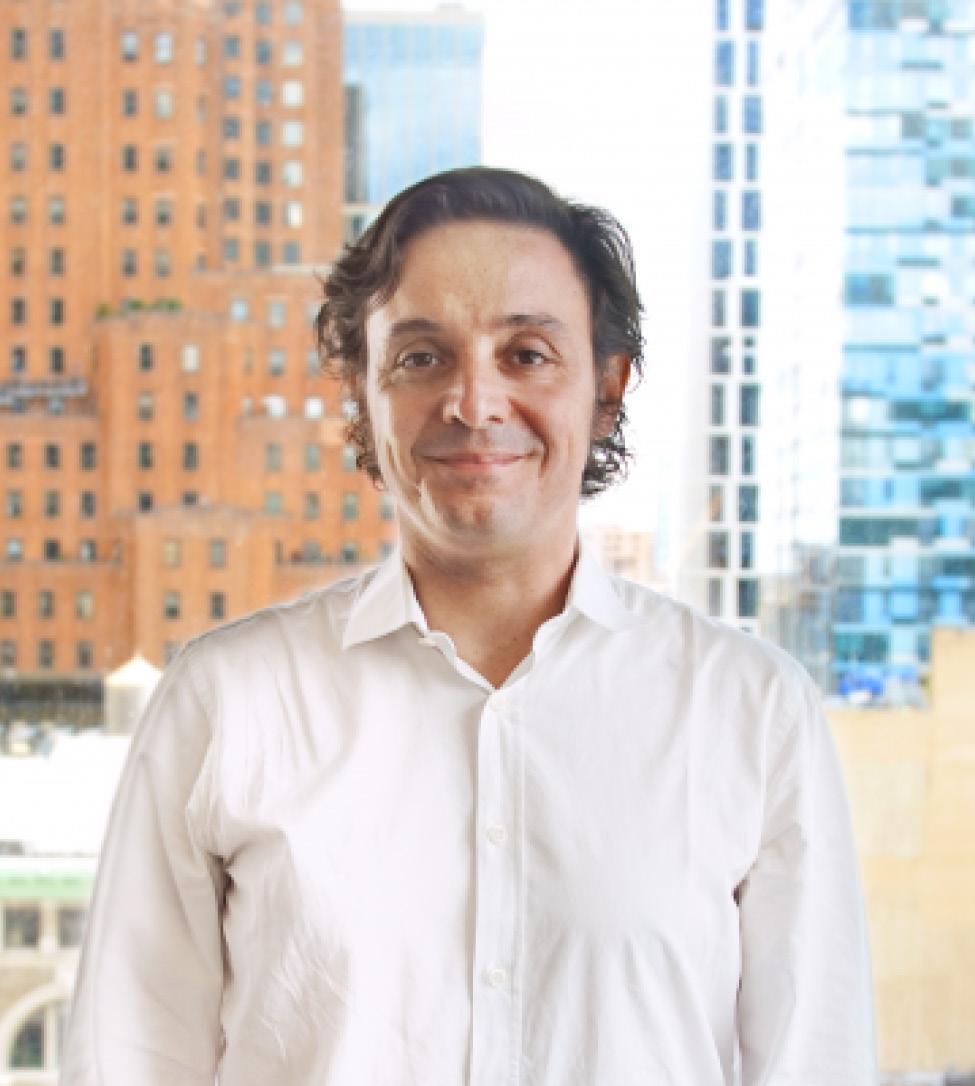
Porfiri’s pursuit took shape through two interconnected research endeavors:
Causes of firearm prevalence and violence: Porfiri’s mathematical techniques uncover causal links between variables in the firearm ecosystem - media coverage, regulations, policies, for example — not just correlations between
NYU TANDON UNCONVENTIONAL ENGINEER VOL. 4 26
Maurizio Porfiri
these factors. Porfiri honed these techniques in his other research into collective behavior, including his studies examining how some fish “lead” their schools’ movements.
Porfiri’s findings often challenge conventional wisdom, suggesting new possible solutions. His team’s investigation into the correlation between mass shootings and firearm sales, for example, found that contrary to popular belief, fear or protective instincts did not significantly influence gun purchases after mass shootings.

Instead, Porfiri’s research identified a strong causal link between media coverage of potential gun regulation and increased firearm sales. Individuals appeared to purchase guns in response to concerns about potential restrictions, sparked by media stories around regulatory measures. This insight lends weight to efforts to maintain a steady drumbeat of media discussion around gun regulation, rather than just when tragic events occur, Porfiri said.
More recently, Porfiri’s team, including Ph.D. candidate Rayan Succar, Postdoctoral Fellow Roni Barak Ventura and NYU undergraduate Sihan Wei,

27
I wanted to contribute something meaningful towards solving the problem.
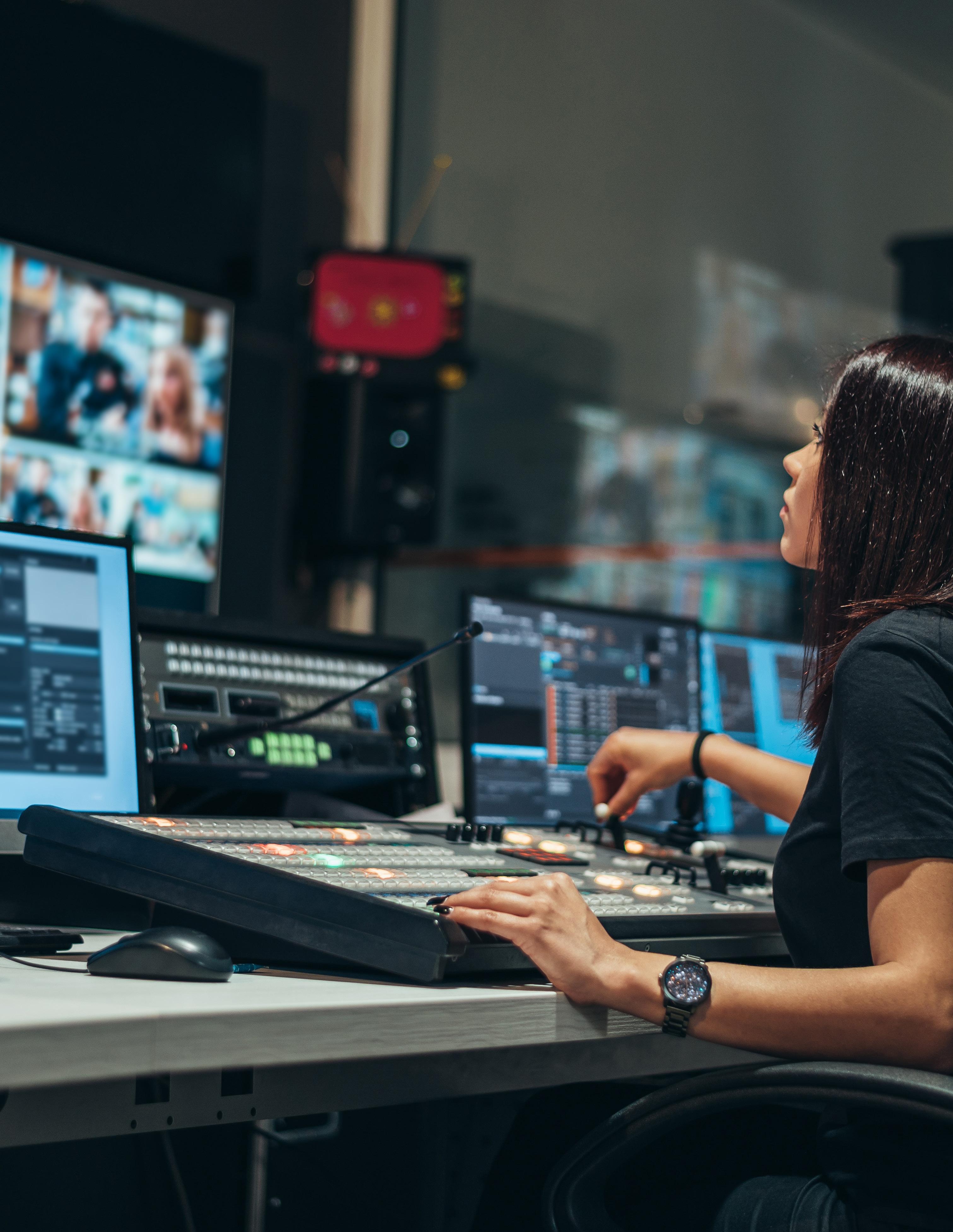
discovered that fame-seeking mass shooters — as opposed to those motivated by personal grievance or revenge, for instance — attempted to draw outsized attention to themselves by deliberately choosing unique targets and locations for their crimes.
This finding upended common assumptions that fame seekers sought notoriety mainly by trying to maximize casualties. It could strengthen the case for robust “red flag” laws, Porfiri said, so people threatening mass violence could be legally disarmed even if their threats seem outlandish based on historical precedent.
Mathematical modeling to fill data gaps: Gun violence research often grapples with inadequate, inconsistent, and outdated official data on gun prevalence and violence rates, leaving policy makers without vital up-to-date and accurate information to make well-informed decisions.
Porfiri’s team develops sophisticated mathematical models to generate indirect measures of those rates, bridging glaring gaps.
Recently, his team combined data from the U.S. government, police departments, media and other sources to create a model that predicts monthly gun homicide rates — up to one year out — with better accuracy than techniques researchers typically use. The model also “backcasts” as recently as one month prior, a significant achievement considering the federal
government’s official monthly gun death data can be nearly two years old when it is released.
The model could be incorporated into a public dashboard useful for policy development and advocacy, according to Porfiri.
Porfiri’s team also constructed a statistical model that predicts state-by-state gun possession and ownership rates, information lacking from any official government source. The spatio-temporal model fuses data from two available proxies, background checks per capita and suicides committed with firearms in a given state, providing results more accurate than either proxy on its own.
The team is now using the model to explore which policies are effective in reducing death by guns in a state and surrounding regions, and how the relationship between gun ownership and violent outcomes is disrupted by different legislation. Other upcoming research will trace how people buy guns based on their locations, investigate peer pressure’s role in gun acquisition, and interrogate causes of suicides by firearms. The researchers are also seeking to collaborate with cities to develop methods for monitoring illegal firearms.
As Porfiri’s team continues to navigate the confluence of engineering, mathematics, and gun violence research in America’s “firearm ecosystem,” they develop insights that challenge established norms, inform evidence-based policies, and pave the way towards a safer future where scientific findings could contribute to curtailing gun violence’s devastating impact.
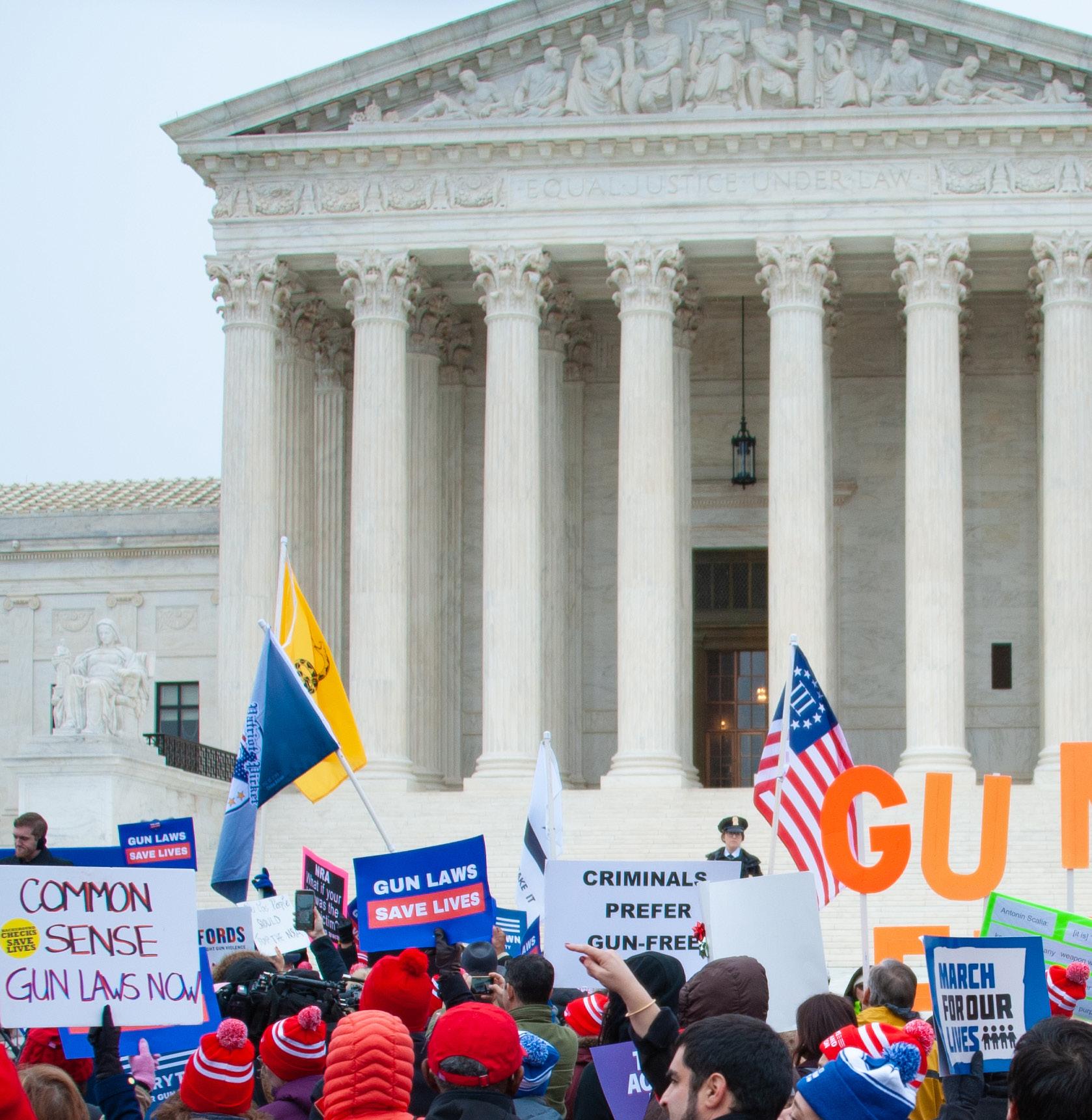
29
The Race to 6G
Don’t get too used to 5G. The next generation of wireless is already on the way, thanks to researchers from NYU WIRELESS at Tandon. Our engineers are planning for whats next in wireless, building wireless technologies that are more energy efficient, more sustainable, and more accurate than ever before.
One key component of this new effort: the launch of NYUSIM 4.0, the world’s first wireless channel simulator capable of generating real-world wireless channels above 100 GHz.

NYUSIM 4.0 is a groundbreaking open-source sub-THz and mmWave wireless channel simulator developed in MATLAB that is free to download and use by global industrial and academic institutions. The first three versions of NYUSIM have been downloaded over 100,000 times since the release of NYUSIM 1.0 in 2016. NYUSIM 4.0 is specifically designed to help accelerate the standardization efforts for 6G wireless communications, which is expected to kick off in 2025.
“The release of NYUSIM 4.0 marks a significant milestone in the development of wireless communication technologies,” said Professor Ted Rappaport, the founder of NYU WIRELESS. “It empowers researchers and engineers across the globe with a powerful tool for designing wireless systems that can operate above 100 GHz, a frequency range that has long been considered
challenging due to its unique propagation characteristics. It brings the promise of paving the way for more efficient and reliable wireless communication technologies that will transform industries and benefit society as a whole.”
NYUSIM 4.0 comes with a myriad of new features that allow for the simulation of wireless channels in various scenarios, including urban microcell (UMi), urban macrocell (UMa), rural macrocell (RMa), indoor hotspot (InH), and indoor factory (InF) environments.
The simulator offers indoor and outdoor channel models for each scenario, supporting carrier frequencies ranging from 0.5 to 150 GHz with an RF bandwidth from 0 Hz (CW) to 1 GHz. The inclusion of drop-based and spatialconsistency-based channel simulations for all five simulation scenarios further enhances the simulator’s capabilities.
This work builds on funding from the National Science Foundation for a new THz Measurement Facility, awarded last year. The $3 million award from the NSF MRI Program will help NYU and its collaborators, the University of Colorado at Boulder, University of Nebraska–Lincoln, and Florida International University, pioneer basic measurements of devices, circuits, materials, and radio propagation channels at the highest reaches of the radio spectrum.
NYU TANDON UNCONVENTIONAL ENGINEER VOL. 4 30
Professor Michael Knox (center) describes THz device measurements in the THz-Lab
MORE NEWS
Nanoscale Discoveries, Big Ramifications
Friction is an everyday phenomenon; it allows drivers to stop their cars by breaking and dancers to execute complicated moves on various floor surfaces. It can, however, also be an unwanted effect that drives the waste of large amounts of energy in industrial processes, the transportation sector, and elsewhere. Tribologists — those who study the science of interacting surfaces in relative motion — have estimated that onequarter of global energy losses are due to friction and wear.
This year, Professor of Chemical and Biomolecular Engineering Elisa Riedo and her team discovered a fundamental friction law that is leading to a deeper understanding of energy dissipation in friction and the design of twodimensional materials capable of minimizing energy loss.
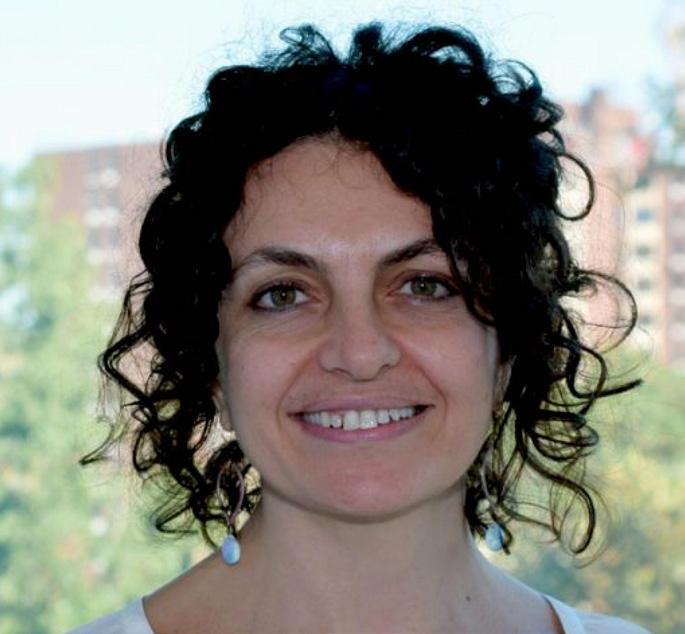
Riedo and her NYU Tandon postdoctoral researcher Martin Rejhon have found a new method to measure the interfacial shear between two atomic layers and discovered that this quantity is inversely related to friction, following a new law. This work could lead to more efficient manufacturing processes, greener vehicles, and a generally more sustainable world.
The interaction between a single atomic layer of a material and its substrate governs its electronic, mechanical, and chemical properties, so gaining insight into that topic is important, on both fundamental and technological levels, in finding ways to reduce the energy loss caused by friction.
Riedo’s research is not the only exciting work being done in nanotech. This year, under the supervision of Davood Shahrjerdi, Associate Professor of Electrical and Computer Engineering and a member of NYU WIRELESS, is relaunching the NYU Tandon Nanofab Cleanroom. The lab contains state-ofthe-art microelectronics processing equipment and atomic force microscopy for a wide range of research activities including spintronics, nanoelectronics, biosensors, lab-on-a-chip technology, energy devices such as solar cells and batteries, biotechnology, microelectronics, and telecommunications. In short, it allows researchers at the cutting edge of technology to produce the materials necessary for advancing their science.
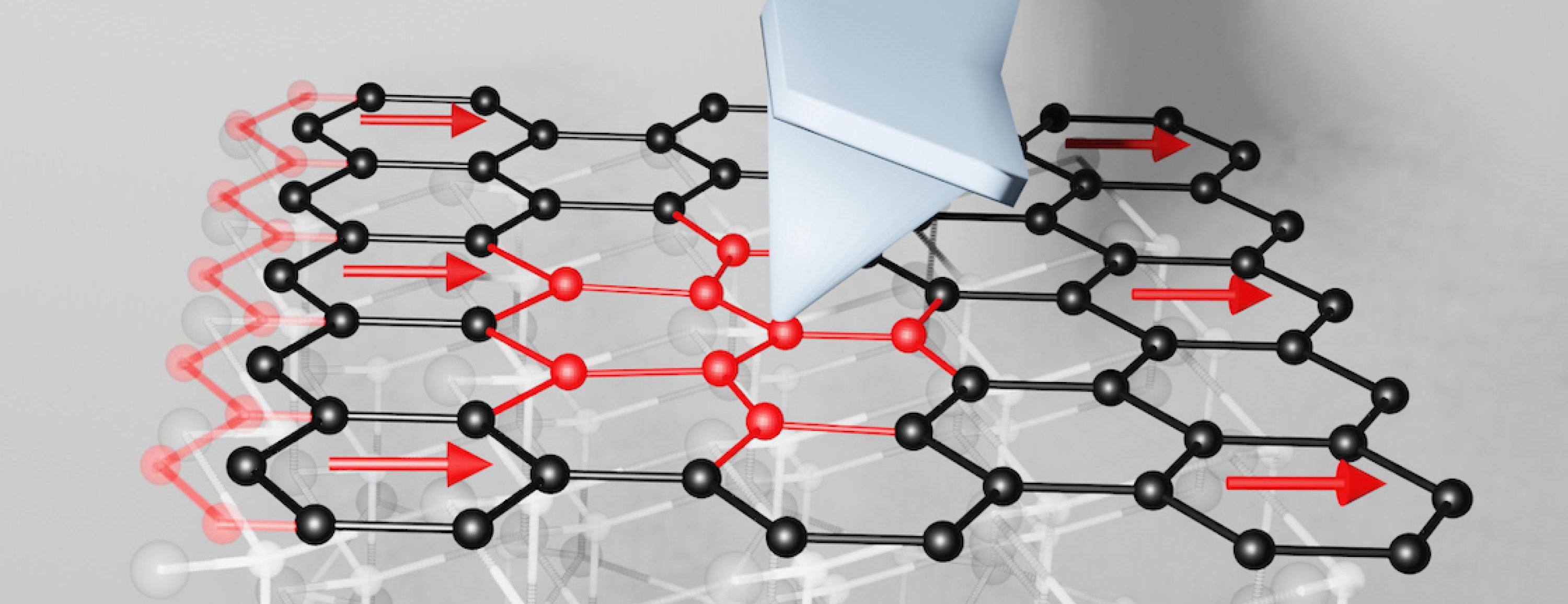
31
Measuring atomic shear: in this rendering, a nano-scale tip pulls atoms so they slide on top of others.
Elisa Riedo
Reengineering the Engineering Curriculum
As technology evolves and the state of the world changes, no engineering school can afford to rely on courses and teaching methods that have been effective in the past. At Tandon, we’re reengineering the fundamentals of our curriculum and encouraging our students from day one to think of how they will eventually use the knowledge they acquire to solve real-world problems and forge a viable career path.
That means incorporating more hands-on, experiential learning opportunities, such as Vertically Integrated Projects, large-scale undertakings that bring together students from every department to launch rockets, design

computer chips, build lunar rovers, and dozens of other missions. It means stressing sustainable engineering practices, and ethics and responsibility when developing algorithms and other new technologies; and encouraging multidisciplinary teamwork — across the entire curriculum. It also means ensuring that students know how to go about finding opportunities to use everything they learn here, which is why their very first Introduction to Engineering course includes sections on preparing a professional portfolio, making presentations, and other necessary skills.
This type of curricular shift — expanding on foundational technical knowledge to encompass instruction on professional skills and ethics — is something that even seasoned graduate students can leverage for a leg up. So Tandon has made several innovative enhancements to its graduate offerings, including a new “Build Your Own” Master of Science in Emerging Technologies program, which allows students to enroll in one of nine interdisciplinary concentrations — including in-demand fields like robotics, cybersecurity, and data science — all delivered fully online and offering an unprecedented level of flexibility for an advanced engineering degree. Students choose 12 credits from their chosen concentration, including a final capstone course geared towards solving a specific concentration-related challenge. The remaining 18 credits are composed of electives from more than 50 courses offered across the entire Emerging Technologies program.
Also in the work: a practitioner-focused Doctor of Engineering degree, and an urban science doctoral track. Stay tuned, because unconventional and innovative aren’t just watchwords in the technology we’re building but in the institution we’re growing.
NYU TANDON UNCONVENTIONAL ENGINEER VOL. 4 32
New Ph.D. students get information and advice from seasoned Ph.D. candidates at an orientation event
Accelerating Innovation
Engineers interested in using their skills to make a positive impact, domain experts seeking solutions to problems they encounter in the course of their own research. When the two groups join forces, it results in powerful translational work that can move from the lab into real-world settings.
That progression has historically been slow and difficult; however. At Tandon, we’re taking steps to accelerate the process.
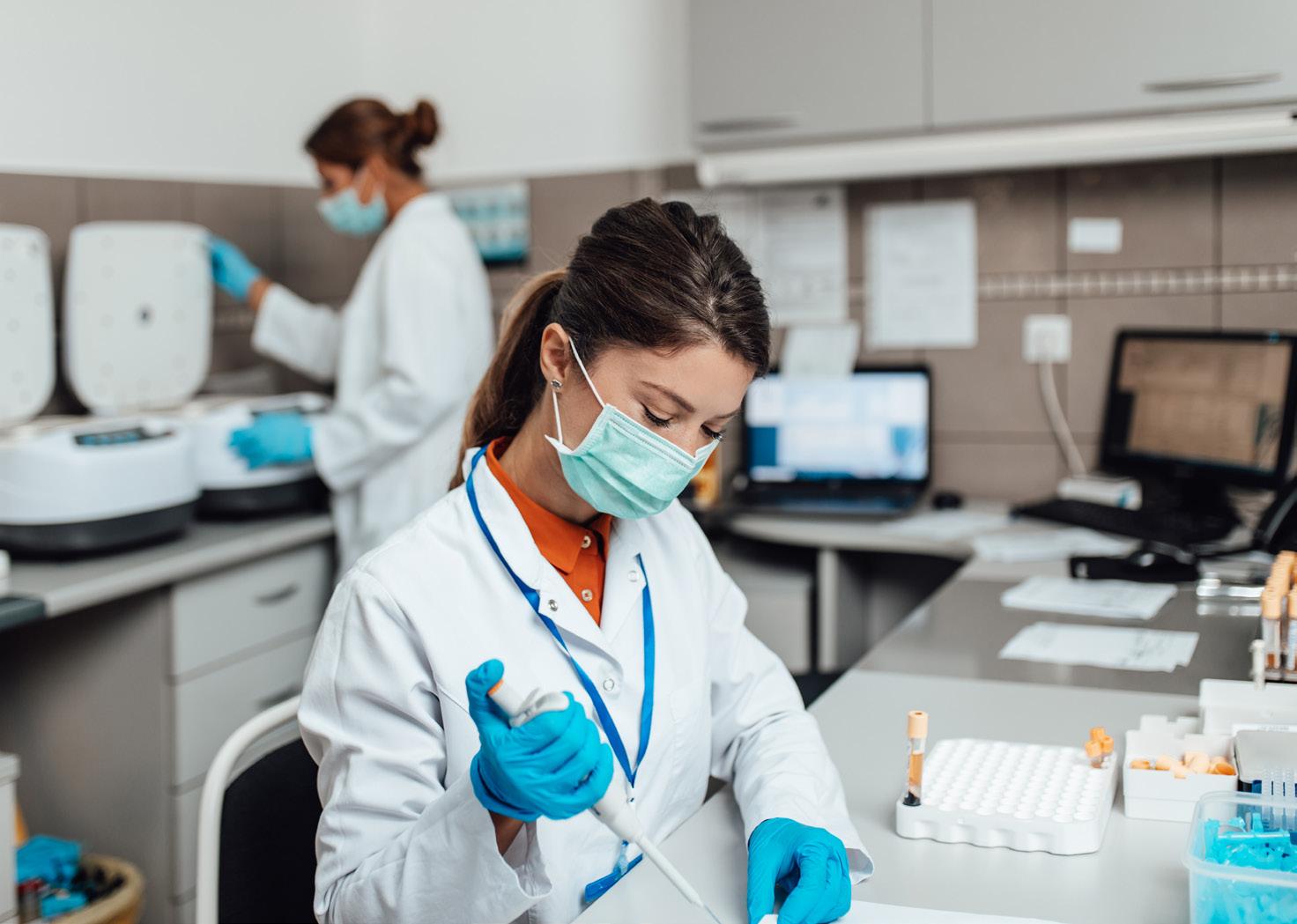
Take our Translational Healthcare Initiative. Lab bench-to-bedside work is being conducted every day at the School of Engineering, where faculty members have forged strong ties with counterparts at the NYU Grossman School of Medicine, Langone Health, and other institutions. Some are exploring the potential of human-induced Pluripotent Stem Cells (iPSCs) to transform from an embryonic state into any type of cell needed, whether that be a heart cell, an immune cell, or a neuron; some are engineering proteins to mimic nature and, in some cases, work even better than nature to deliver therapeutics efficiently and regenerate tissues, while others are developing new medical imaging technologies that use near-infrared light instead of more common X-rays or ultrasound.
Powered by the NYU Tandon Department of Biomedical Engineering and the NYU Tandon Future Labs, the Translational Healthcare Initiative offers $200,000 and venture coaching to teams of Tandon researchers and Langone clinicians who collaborate on practical, commercially viable innovations to improve patient care.
But ushering new discoveries into the marketplace where they can benefit the public poses challenges beyond time and funding. Sometimes space is also a consideration, especially for hard-tech entrepreneurial endeavors like those involving chemical processes, since the wet benches and fume hoods needed for
that type of work are expensive and not readily accessible to business founders unconnected to major academic or industrial facilities.
Miguel Modestino, the Donald F. Othmer Associate Professor of Chemical Engineering and the inaugural director of NYU Tandon’s Sustainable Engineering Initiative, is helping rectify that, one venture at a time. Together with the CBE department, Modestino helped to open laboratory space in Rogers Hall for climate startups to access much needed R&D facilities and resources. The first company to join the space is AIR COMPANY, a startup that uses CO2 to create sustainable alcohols and fuels that can be applied to a variety of consumer and industrial products. That willingness to share space is paying off: the company recently developed a Sustainable Aviation Fuel (SAF) made from captured CO2 with support from JetBlue, Virgin Atlantic, Boom Supersonic Venture branches, and the US Air Force. In collaboration with Modestino, they won a Small Business Technology Transfer (STTR) Program grant from NASA to make integral strides towards carbon-negative rocket fuel for space applications on Earth, Mars, and beyond. Together, Modestino and Air Company are studying the feasibility of using the technology to produce rocket propellant and to one day deploy on Mars to produce a stable, storable fuel in-situ, using only the Martian atmosphere, water, and solar photovoltaic electricity. Whether it’s from the lab to the doctor’s office or the lab to Mars, Tandon aims to get research discoveries to wherever they can do the most good.
33
Meet the 19 Newest Members of the Tandon Faculty

We take great pride in being a school whose faculty has included such luminaries as Herman Mark, known as the “Father of Polymer Science,” and Ernst Weber, who did pioneering work with microwaves. We take equal pride in our 19 newest faculty members, who are making notable
strides in a wide variety of areas. Whether they’re helping clinicians develop more effective cancer treatments, finding novel applications for AI, or making our highways safer, they’re poised to contribute to Tandon’s future legacy in their own ways.
NYU TANDON UNCONVENTIONAL ENGINEER VOL. 4 34
KATSUO KURABAYASHI: A VISION FOR THE FUTURE OF MECHANICAL ENGINEERING
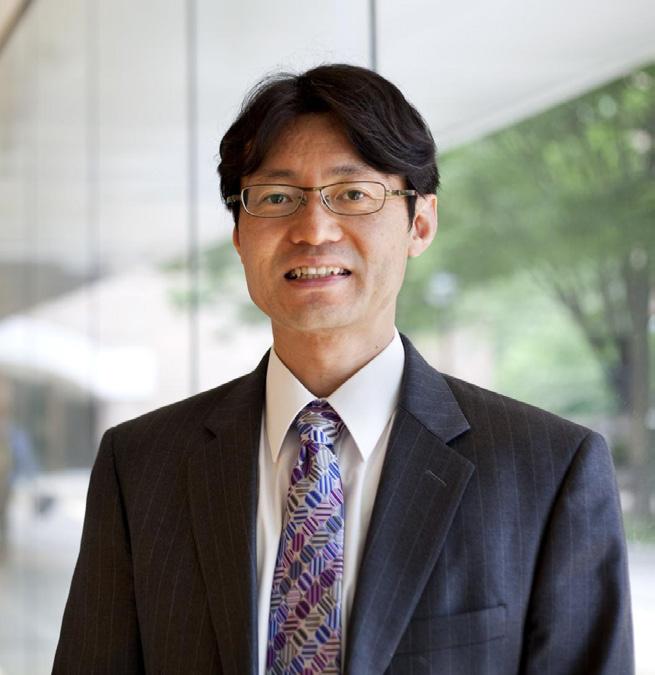
Mechanical Engineering has long been
pigeonholed as a discipline built around machines — engines, airplanes, rockets. But modern Mechanical Engineering is pivotal in addressing almost any engineering problem you can think of, and this June, NYU Tandon welcomed Katsuo Kurabayashi, a new Department of Mechanical and Aerospace Engineering chair with optimistic predictions for the future scope of the field and its world-changing potential.
“Mechanical principles are involved in nearly every phenomenon — from the control of stem cells to how sound waves travel through the air,” Kurabayashi says.
“So mechanical engineers are now collaborating with everyone from medical clinicians to urban planners and even participating in areas you might not expect, such as digital media, since working with technologies like motion capture and virtual reality involves mechanical applications.”
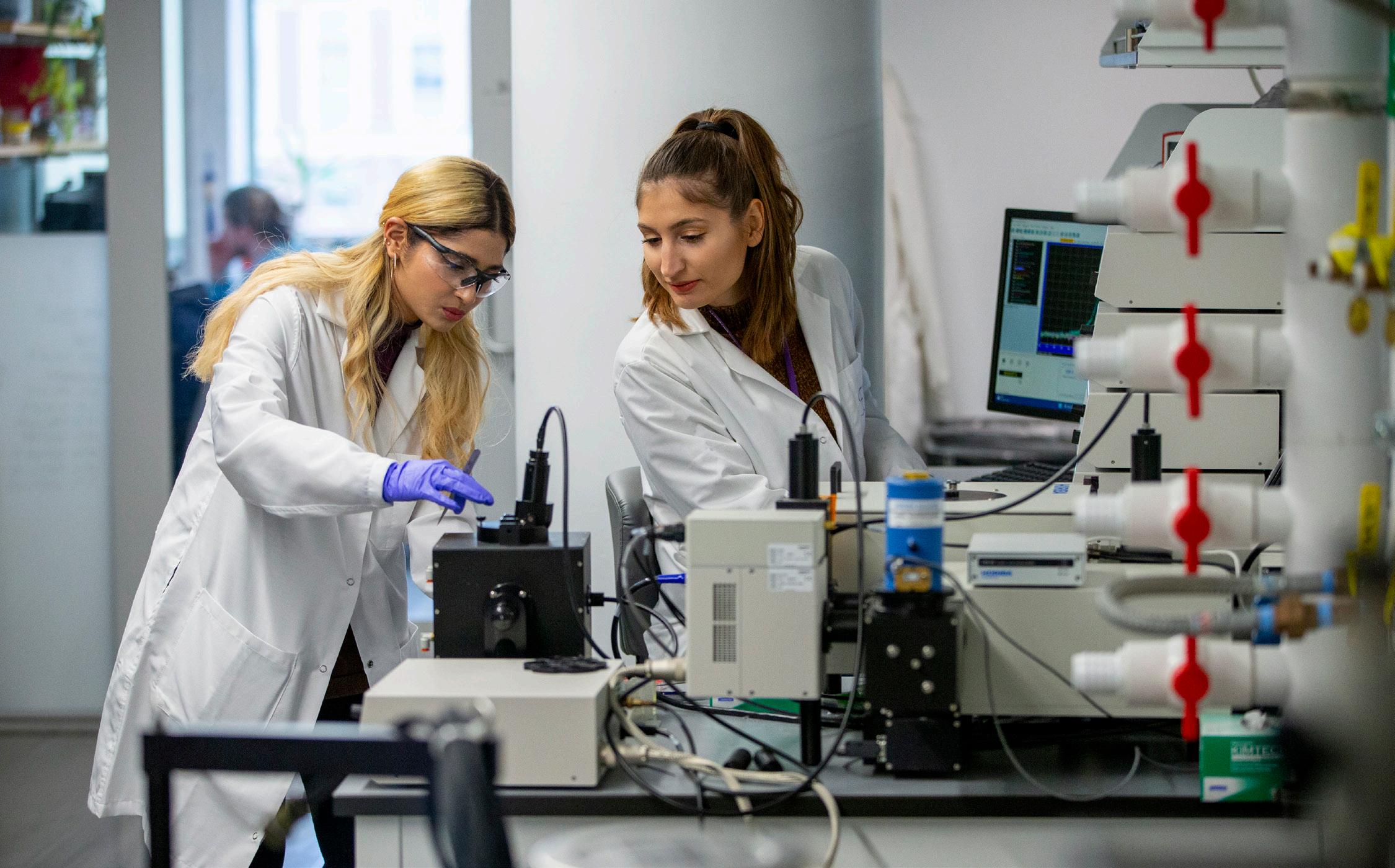
Kurabayashi’s own research takes place at the micro- and nanometer scales to impact wireless communications, healthcare, life sciences, and environmental monitoring, among other sectors; he recently developed several new biochip devices that enable the rapid diagnosis and treatment of seriously ill patients by making it possible to precisely determine subtle variations in a person’s immune status by measuring intercellular communication mediator proteins called “cytokines” in real-time, and those chips have been successfully implemented by physicians treating patients with cancer, acute respiratory distress syndrome, COVID-19, and Crohn’s disease, among other applications.
It may have nothing to do with engines, airplanes, or rockets, but as he points out, the mechanical engineer of the future will look at any area requiring multidisciplinary perspective and recognize the contributions they can make.
35
LINDA BOYLE: TAKING A HOLISTIC APPROACH TO RESEARCH
Tandon’s Vice Dean of Research has a daunting list of responsibilities: as the key leader in the dean’s office for research strategy, development, and operations, whoever holds the post is responsible for working collaboratively with a wide range of stakeholders, including faculty, university leaders, department chairs; center directors, staff, and industry partners to advance Tandon’s research initiatives and facilitate the creation of new research centers and initiatives in support of the school’s strategic vision. They must ensure that faculty have the support they need to effectively engage in their research activities and implement policies and practices to support the growth and sustainability of the school’s overall research enterprise.
It’s a tall order, but Linda Ng Boyle is supremely equipped to take it on.
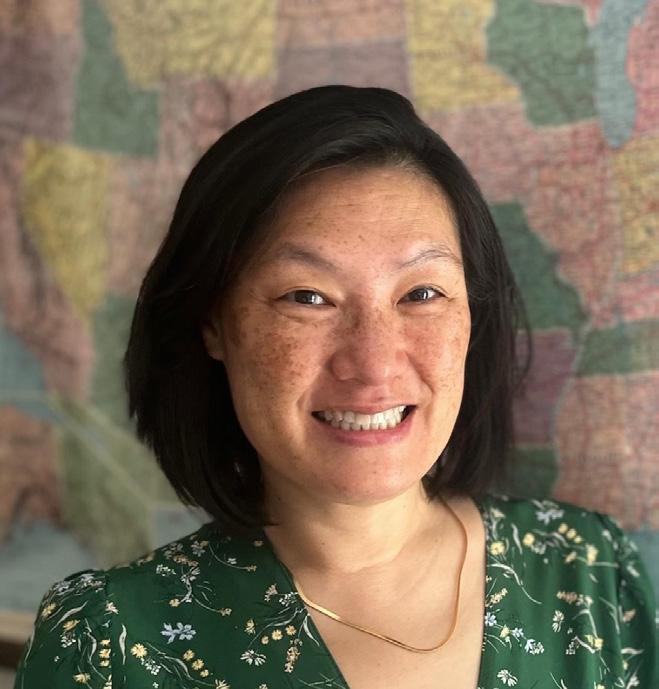
Boyle, who also holds the title of Professor of Civil and Urban Engineering here at Tandon, takes a holistic approach to her own research, which is aimed at
improving automotive safety and reducing injuries and fatalities, with a focus on driving behavior, crash countermeasures, and crash and safety analysis. It’s an area of enormous importance to automobile manufacturers, government regulators, clinicians, and a whole host of others.
Because her work is so wide-ranging, Boyle has received funding from the National Science Foundation, National Institutes of Health, U.S. Department of Transportation, and many large automakers, and she is looking forward to strengthening that network at Tandon. She is also on a mission to increase collaboration between not just departments within the School of Engineering but schools and centers throughout the university, such as the Grossman School of Medicine, Courant, and Center for Data Science. “I may hold a vice dean’s title,” she says, “but, simply put, what I really am is a researcher helping other researchers.”
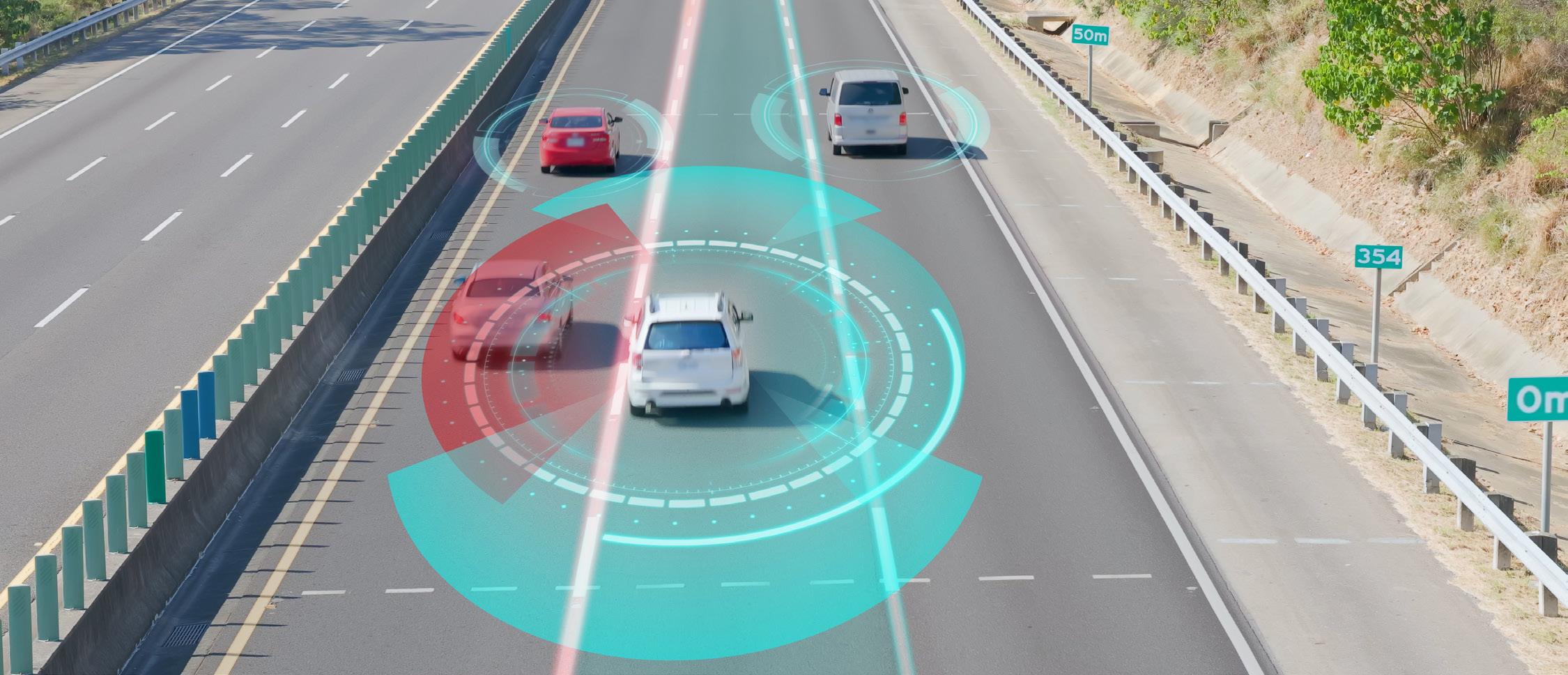
NYU TANDON UNCONVENTIONAL ENGINEER VOL. 4 36
I may hold a vice dean’s title, but, simply put, what I really am is a researcher helping other researchers.
NIZAR TOUZI: BUILDING A HUB OF FINANCIAL MATHEMATICS
Back in 1900, when Louis Bachelier submitted his Ph.D. thesis at the University of Paris, fin-desiècle mathematicians were not impressed. Bachelier had applied mathematics to the world of finance — an area of little interest in that era, when the most exciting mathematical problems were thought to relate to physics. He struggled to be taken seriously throughout his academic career, but thanks to a resurgence of interest in his work beginning in the mid-20th century, he is now hailed as the father of financial mathematics and credited with developing the first model of a stochastic process or “Brownian motion.”
Nizar Touzi – a former president of the Bachelier Finance Society and winner of the French Academy of Science’s Bachelier Prize — arrived this semester in Brooklyn as the new chair of NYU Tandon’s Department of Finance and Risk Engineering (FRE).
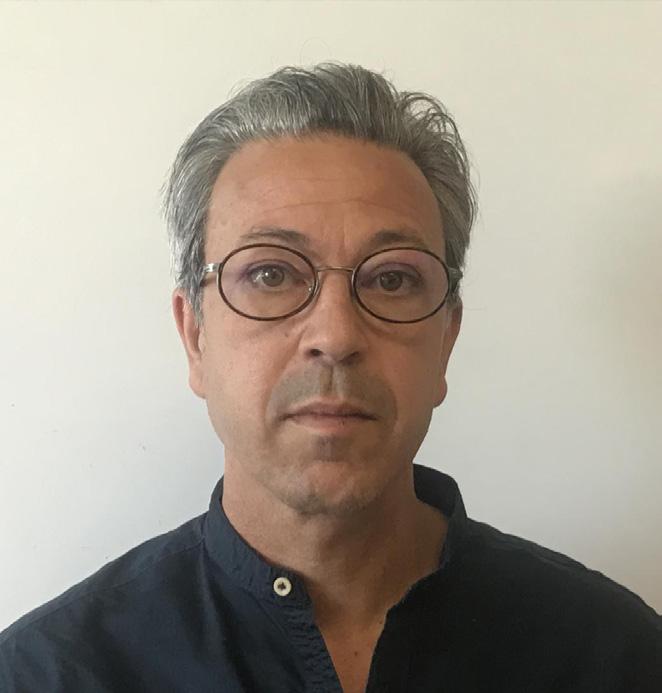
“The term stochastic refers to random fluctuations and unpredictability.” Touzi — who has made significant contributions within the realms of stochastic analysis, optimization, stochastic control, and game theory, with applications in finance and economics — explains.
“When dealing with a complex, dynamical system (whether that’s the stock market, the electrical power market, the implementation of government regulations, or new digital platforms like Uber that require a clever mechanism design), the object is to optimize their performance and manage the risks involved. Luckily, unlike in Bachelier’s day, we now recognize the practical value of applying mathematics to these issues.”
Touzi’s vision for FRE, which is already home to one of the most rigorous and highly regarded quant master’s programs in the nation, includes launching a Ph.D. program and making Tandon an important hub of applied financial mathematics research. Back in France, where he served as a department chair and professor of applied
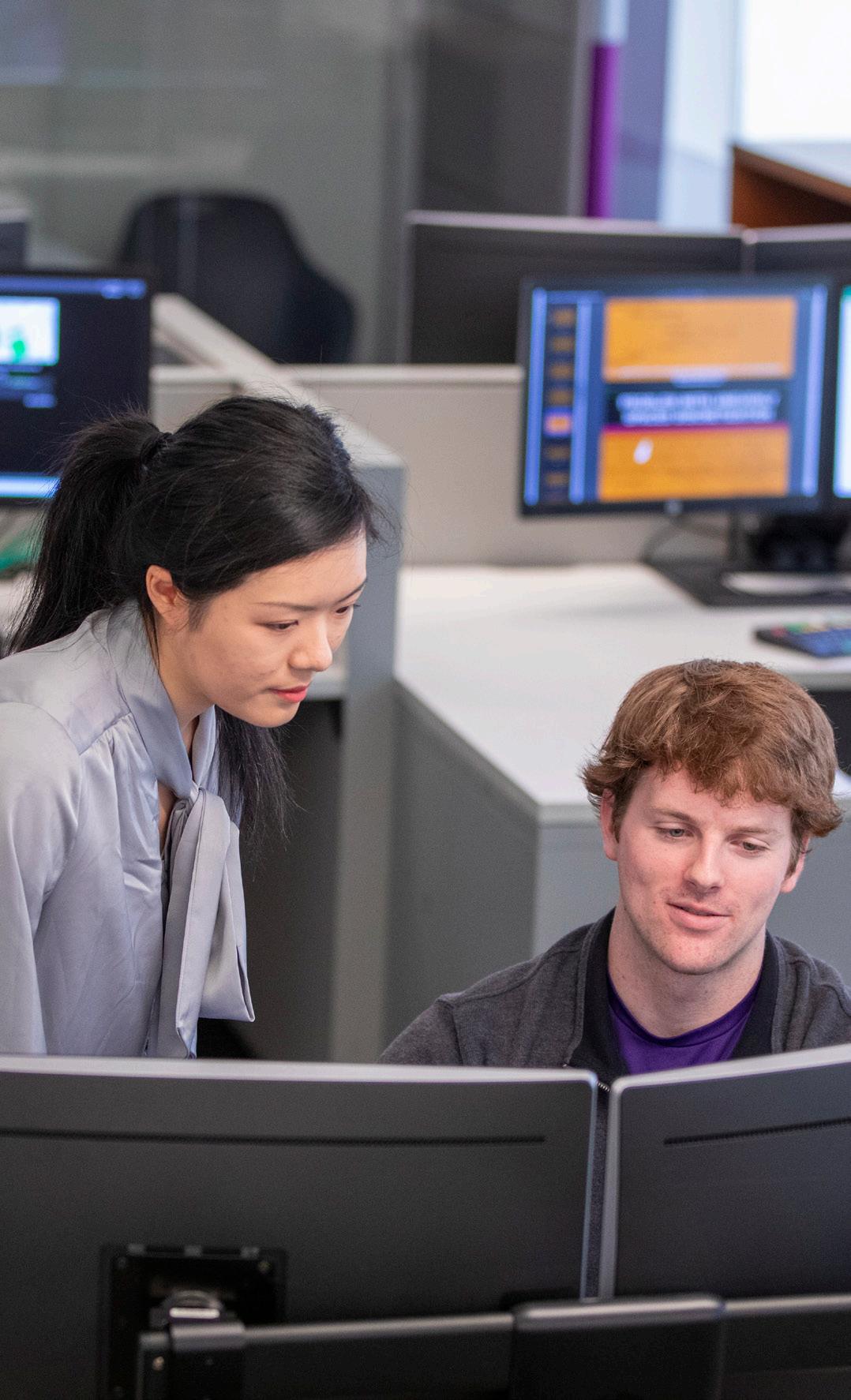
mathematics at Ecole Polytechnique, Touzi contributed to the Louis Bachelier Institute, a group dedicated to forging collaborations among academia, industry, and the public sector, and he hopes to mount a similarly fruitful effort here.
While many of Touzi’s scholarly papers have titles impenetrable to the average investor or bank customer, the new department chair works closely with industry leaders to ensure that he is addressing topics relevant to their work. “It’s important to be connected to the real world,” Touzi, who has served as a consultant to several financial services asserts. “That’s one of the most exciting parts of my work, since the real world is constantly changing and the problems we’re tackling evolve; certainly Bachelier never dreamed that the idea of Brownian motion could be applied to ensure that a digital platform operates in an equitable, efficient manner.”
37
Assistant Professor of Electrical and Computer Engineering


HAMED RAHMANI:
“The need for a higher bandwidth alongside low latencies and low power consumptions could only be met by adopting a holistic design approach toward next-generation hardware to co-optimize different parts of a sensing and communication system.”
Assistant Professor of Chemical and Biomolecular Engineering
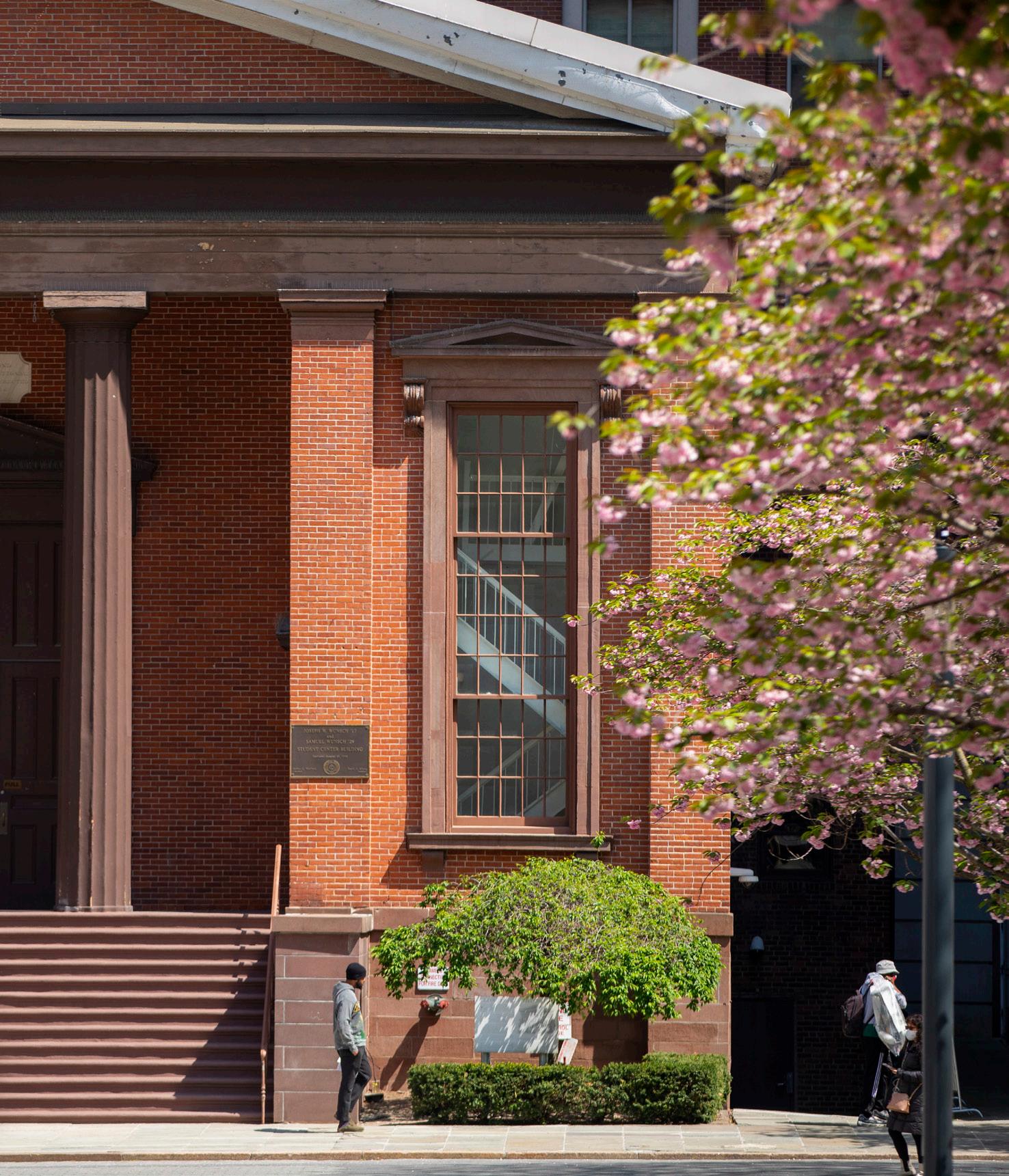
DHARIK MALLAPRAGADA:
“Traditionally, chemical engineers didn’t concern themselves much with the power grid, but it is becoming clear that the electric grid will play a central role in a future low-carbon economy through expanded use of electricity in many applications where electricity use has not traditionally been relevant, like industry and transport. This makes it necessary to study interactions between grid and other end-use sectors to fully appreciate the cost, resiliency, and equity impacts of electrification versus other decarbonization strategies.”
Visiting Professor of Computer Science and Engineering
RADOSLAV FULEK:
“Applications for theoretical research often don’t come until much later, and it can also be true that the byproducts of pioneers’ endeavors are equally important; consider the development of rigorous software engineering practices during the Apollo program.”
NYU TANDON UNCONVENTIONAL ENGINEER VOL. 4 38
Our newest faculty members predict what might be next — for their fields and for themselves
SAI ZHANG:
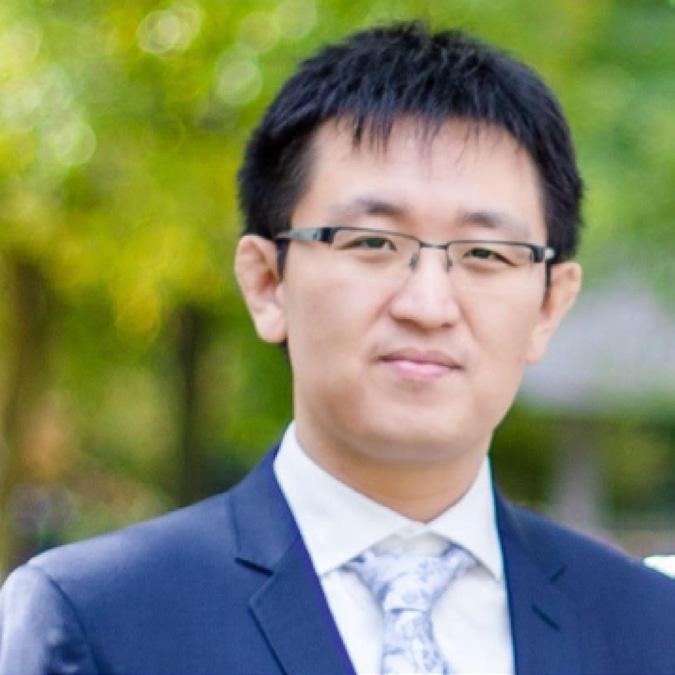
“Just look at what ChatGPT can already do. It’s working with words and sentences now, but pictures and video are not far behind, and when you have new inputs, you’re going to get exciting new outputs.”
because it’s a key determinant of environmental justice, but any area of urban study can be illuminated if you know how to leverage spatial data.”
qualitative research methods and social justice principles to technically oriented students, many of whom go into industry and research roles and put ideas from the classroom into action. I feel confident that these frameworks can help Tandon graduates contribute to building more ethical tools in the future than the ones we know today.”
(CUSP)
ANTON ROZHKOV:
“If you examine trends and ask why they’re happening, that’s the first step to identifying issues and finding solutions. The energy sector is particularly interesting seen through this lens,
Management and Innovation and Center for Urban Science and Progress (CUSP):
TAKAHIRO YABE
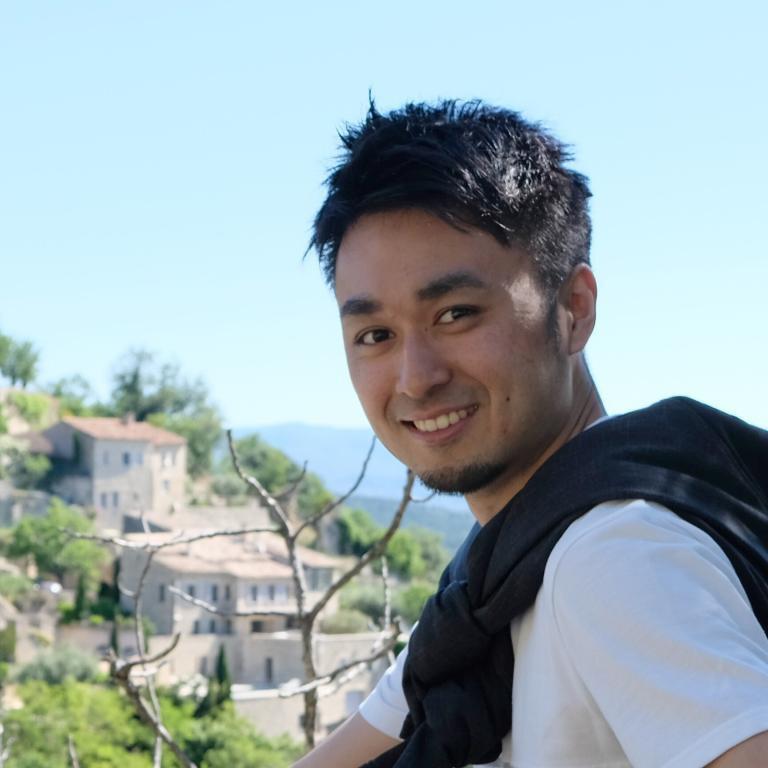
“There’s a move towards more open and transparent data underway that will help democratize research and provide new insights. I can envision a day when university researchers are able to develop massive synthetic datasets and share them freely.”
MARGARET JACK:
“I am passionate about teaching engineers and designers to analyze the social impacts of emerging technologies. I find it meaningful to teach humanities concepts,
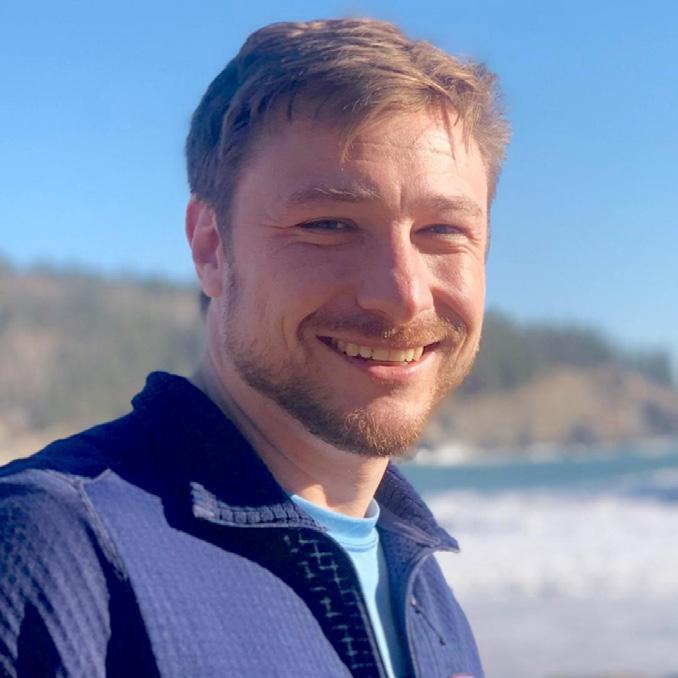
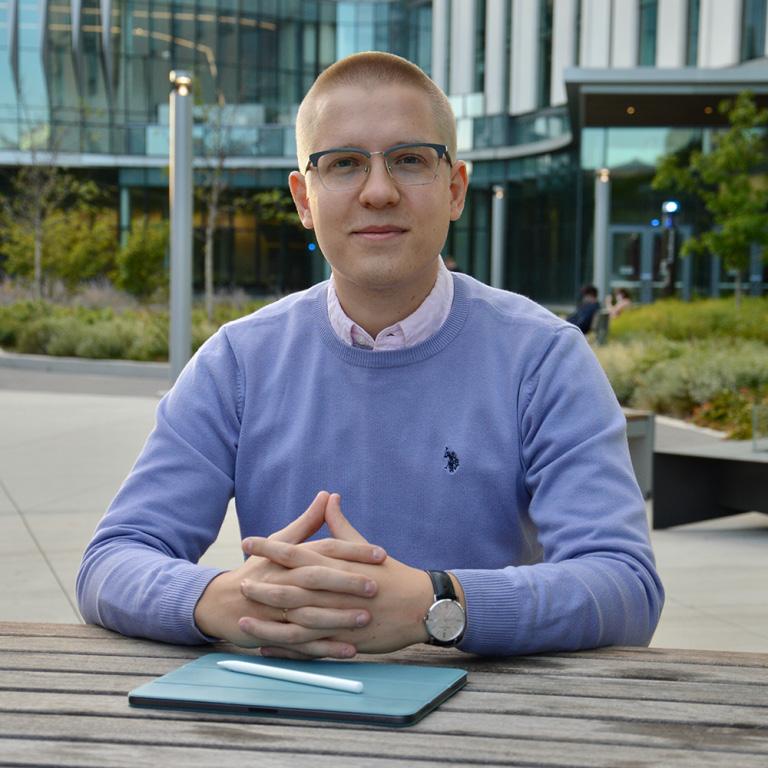
ROBERT KRUEGER:
“My research focuses on scalable visualization and visual analytics for biomedical applications. I help biologists and physicians to glean insights into increasingly large and complex datasets, enabling a better understanding of the cause, development, and response to diseases such as cancer and potentially leading to better treatments. I see the next frontier in the heterogeneity of imaging and multi-omics (for example, large-scale protein, DNA, and RNA sequencing) data. Joint analysis will help to reveal a more holistic picture of the form and functions of cells and tissue.”
39
Assistant Professor of the Department of Technology
Industry Assistant Professor at Tandon’s Center for Urban Science and Progress
Assistant Professor of Computer Science and Engineering
Industry Assistant Professor of Technology, Culture and Society
Assistant Professor of Computer Science and Engineering
Industry Assistant Professor of Biomedical Engineering
MICHAEL HANNA:
“Right now, there is no effective treatment for Traumatic Brain Injury. I’m sure there will be one day, and in the meantime, researchers are developing better protective gear.”
Assistant Professor of Computer Science and Engineering
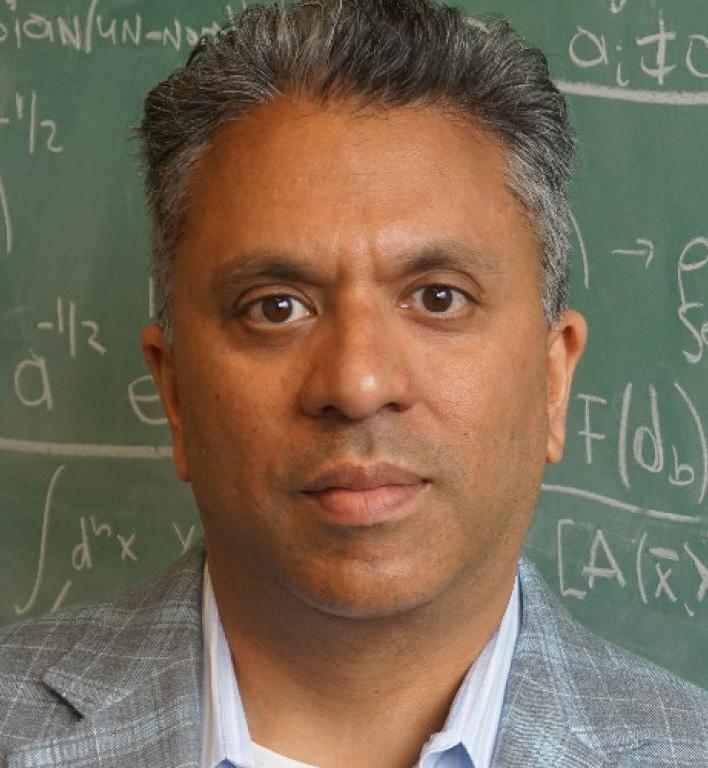
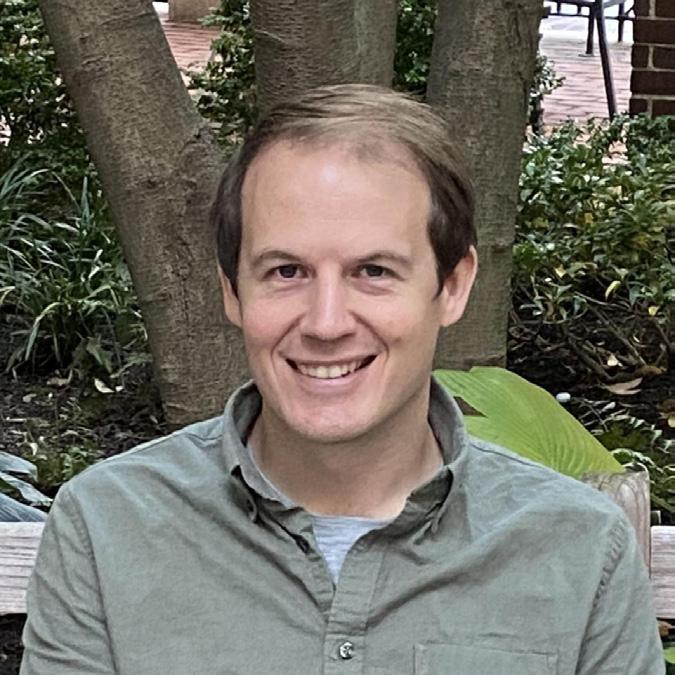
ERDEM VAROL:
“My field has exploded in the last decade. We have innovative devices to measure gene expression and activity at high resolution, and we can even do studies in real-time, which allows us to decode actions in a way that could lead to enhanced brain-computer interfaces. Mainly, we can ask questions we have never asked before.”
Assistant Professor of Electrical and Computer Engineering
YUZHANG LIN:
“We’re taking part in a revolution in the power sector. There are big, ambitious changes happening as massive offshore wind farms are being constructed. It’s not just the issue of generation. You’ve got to then transmit all that power, and the corridor for transmission in New York is already pretty narrow, so that poses important problems to solve.”
Assistant Professor of Applied Physics
RUPAK CHATTERJEE:
Assistant Professor of Electrical and Computer Engineering
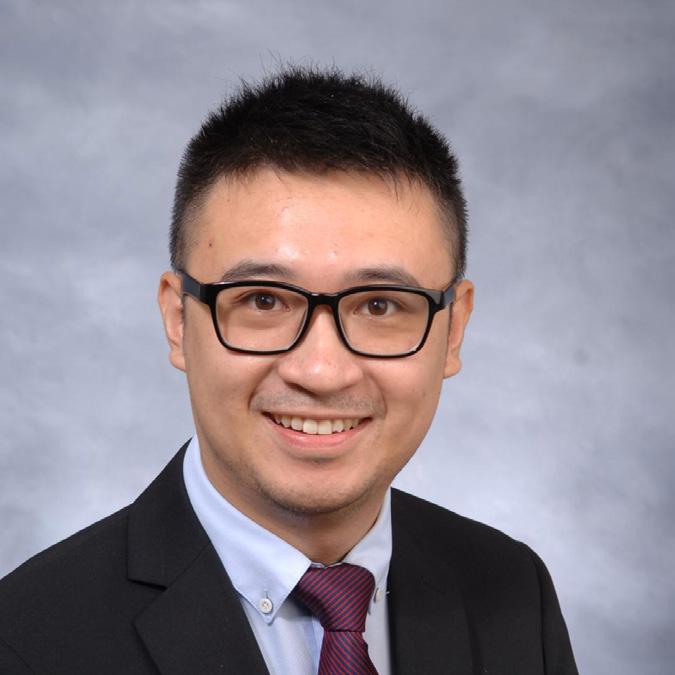
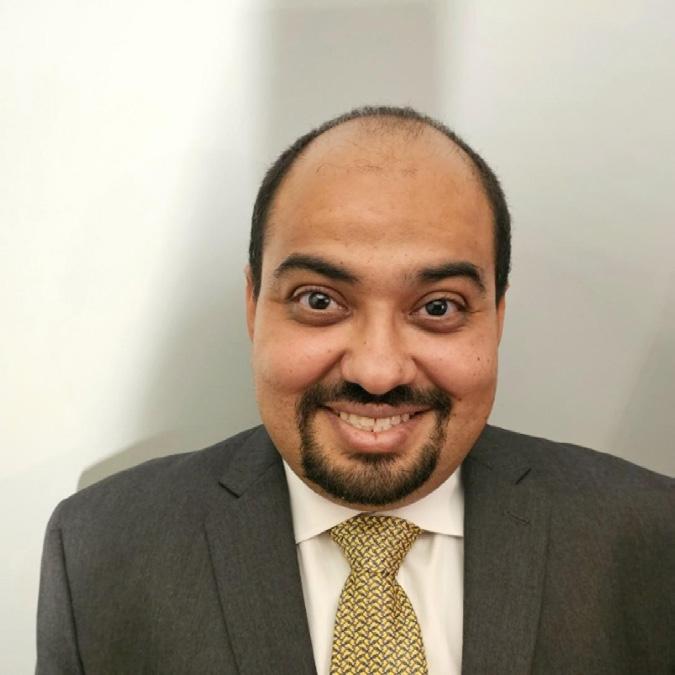
DAVID FOUHEY:
“It’s an exciting time to be involved in computer vision, since the technology is at a stage advanced enough to have practical applications and real-world benefits.”
“Fairly regularly, news stories come out about quantum entanglement, quantum AI, and other such topics. That’s what’s driving the future, and it’s easy to be awed or intimidated. But you don’t have to be an expert. Undergraduates willing to learn some basic quantum concepts can get involved here in cutting-edge research while testing quantum algorithms out on actual quantum computers.”
Visiting Assistant Professor of Integrated Digital Media
CRAIG FAHNER:
“I aim to develop digital interfaces beyond the ‘like’ button that encourage thought and help people develop critical digital literacy — in effect, fighting the algorithm as young people of past decades espoused ‘fighting the power.’ I want to make transparent the invisible ways we are influenced as we go about our daily lives via algorithmic media — even down to the movies we see and restaurants
NYU TANDON UNCONVENTIONAL ENGINEER VOL. 4 40
we patronize thanks to recommendation algorithms.”
AWARDS AND HONORS
It was a winning year for several faculty members, students, and alumni. The entries here represent just a small sampling of the honors members of the Tandon community have received during the past academic year.
Department Chair of Mechanical and Aerospace Engineering, and many other formal and informal roles.
Assistant Professor of Electrical and Computer Engineering
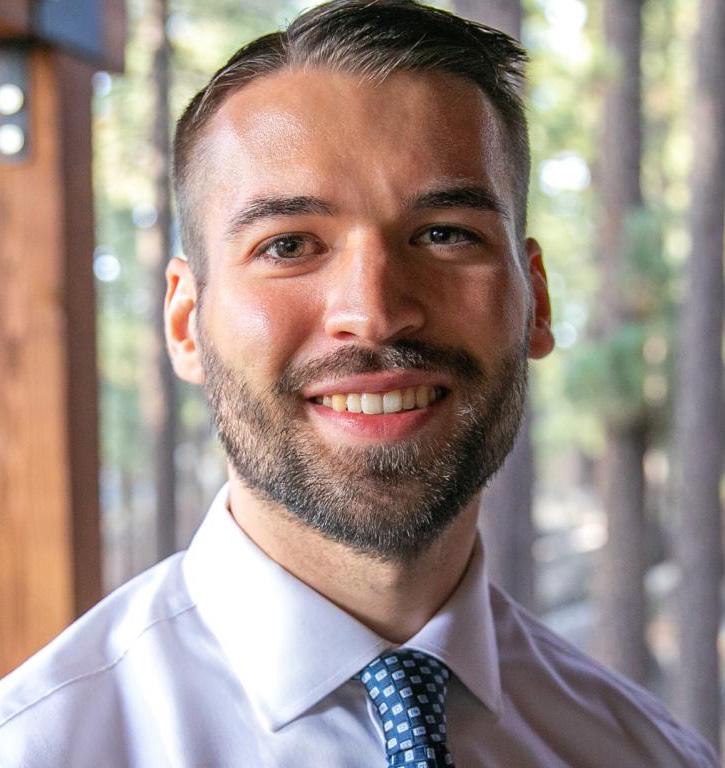
AUSTIN ROVINSKI:
“Future computing systems will look very different from current ones. We need to create tools which simplify design, and then use those tools to help prototype novel systems. Machine learning is really pushing the state of the art. Just look at the recent news from NYU Tandon, where a team designed a processor using plain English ‘conversations’ with an AI model.”
The Polytechnic Medal
The Polytechnic Medal was created to commemorate the values that have made the School of Engineering a home to innovation and opportunity since its inception in 1854. The medal’s inscriptions allude to the noblest goals of engineers and engineering: bringing technology to society and ensuring that their work respects the primacy of nature while pushing the bounds of human achievement.
Becker is an international expert in the areas of the experimental and theoretical study of electron-driven processes in plasmas, and was part of a group of pioneering scientists who determined the ionization cross sections for atoms and molecules, which are critical to understanding the charge carrier formation in plasmas. He is also well-known for microplasmas or plasmas generated and sustained at atmospheric pressure. His interest and expertise in advancing technology transfer and IP commercialization also drove his long-term leadership of Tandon’s Institute for Invention, Innovation, and Entrepreneurship.
Industry Assistant Professor of Computer Science
SALIM ARFAOUI:
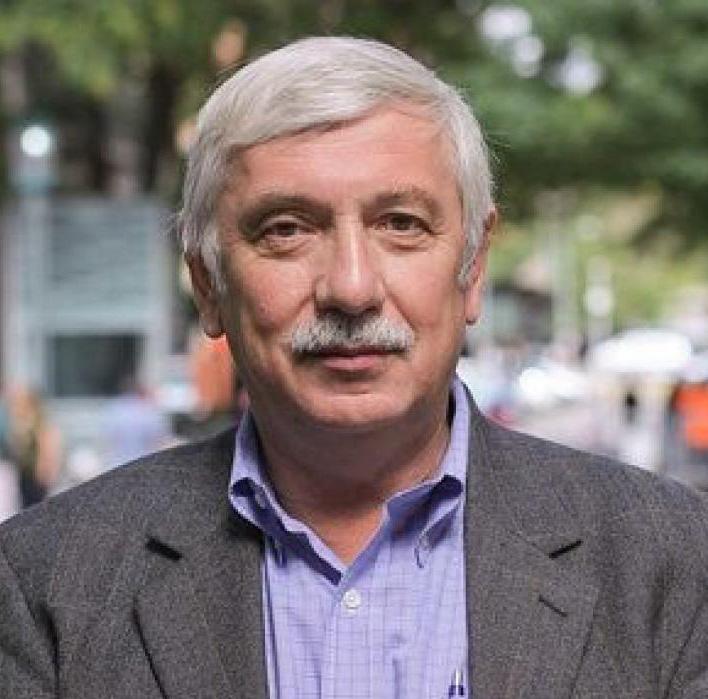
“At Tandon I expect to build a classroom environment where clarity and hands-on, real-world assignments foster exceptional learning.”
This year, Kurt Becker, Professor Emeritus, received the medal engraved with Commitment to Scholarship, Entrepreneurship and Research, all aspects that Kurt represented and helped further during his time at NYU Tandon as a Professor of Mechanical and Aerospace Engineering; Professor of Applied Physics; Vice Dean of Research, Innovation and Entrepreneurship; interim
This September, Tandon hosted a one-day symposium celebrating physics, engineering, and innovation in Becker’s honor, Electron-driven Processes: From Single Collisions to High-Pressure Plasmas, featuring a wide range of esteemed speakers, including Katepalli Sreenivasan, NYU Tandon Dean Emeritus, and others from the U.S. and Europe who covered topics ranging from advancements in cancer treatment to the power of science diplomacy to bridge global divides.
41
Tandon Teaching Awards
Associate Professor of Civil and Urban Engineering Semiha Ergan — who is also appointed to the Department of Computer Science and Engineering and serves as an associated faculty member at Center for Urban Science and Progress — received the 2023
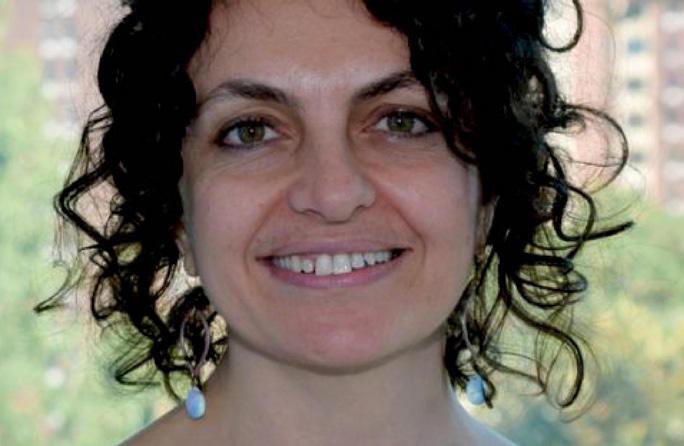
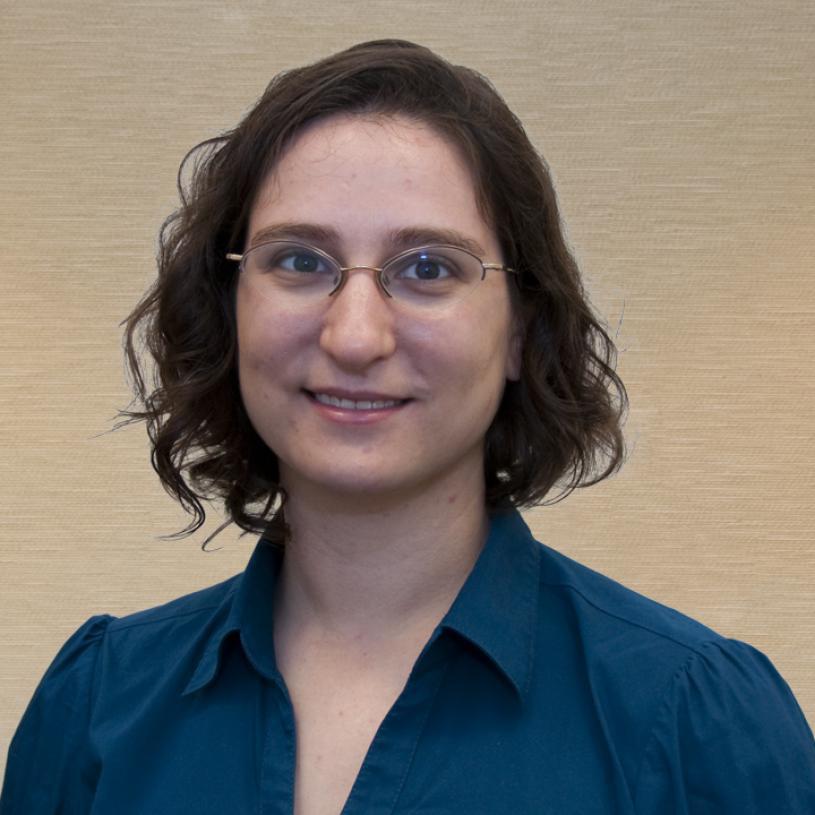

Distinguished Teacher Award, which is bestowed upon someone who has demonstrated sustained excellence in teaching over the past five years and which is considered the premier teaching award at NYU Tandon.
The 2023 Jacobs Excellence in Education Award, aimed at recognizing and fostering innovation and excellence in teaching, went to Associate Professor of Computer Science and Engineering Rachel Greenstadt
Erin McLeish of the Department of Computer Science and Engineering received the Dean’s Award for Excellence in Online Education, given to instructors who have demonstrated excellence, through personal commitment to students and the development and delivery of innovative online education material.
Ingrid Paredes, an Industry Assistant Professor in the General Engineering program, was the recipient of the Inclusive Excellence Award for Faculty, established to honor a Tandon faculty member who demonstrates inclusive leadership and manifests the ideals of diversity, belonging, and equity through research and scholarship, creative work, teaching, mentoring, and service.
Tandon Research Awards
Professor of Chemical and Biomolecular Engineering and affiliated Professor of Mechanical Engineering Elisa Riedo and Department of Technology Management and Innovation Chair Oded Nov, who is a faculty member of the Center for Urban Science and Progress, received
Excellence in Research Awards, given annually to senior faculty members in recognition of significant and sustained research accomplishments.
Assistant Professor of Computer Science and Engineering

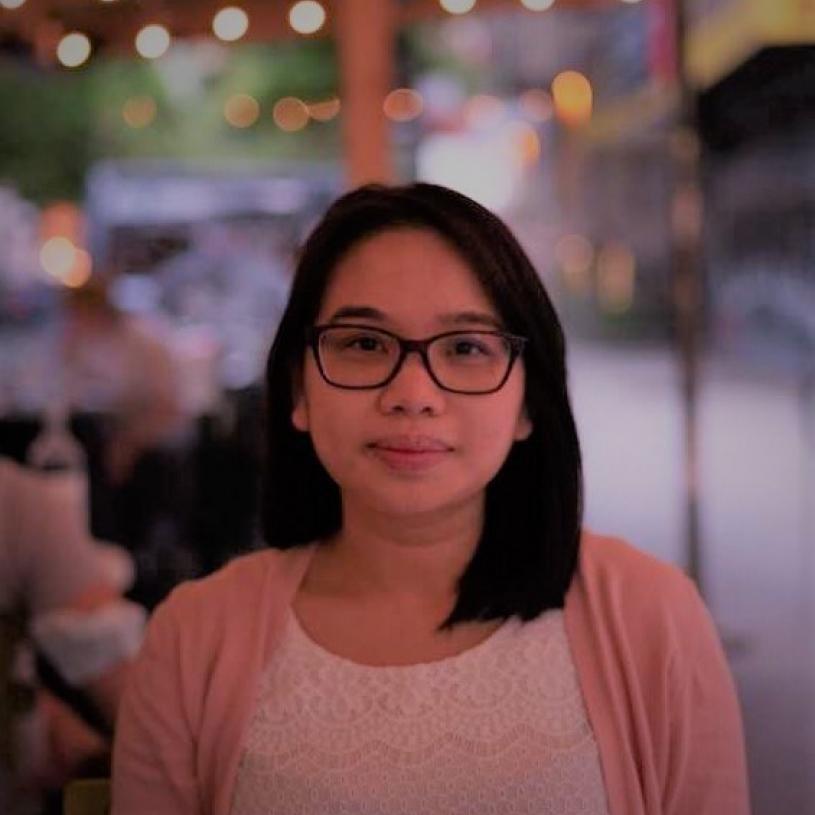
Christopher Musco was the winner of this year’s Junior Faculty Research Award, presented annually to tenure-track members of the faculty to acknowledge their publications in top-tier venues, funded research proposals, student mentoring, and recognition by professional societies.

Important New Titles
Riedo and Nov were also elevated, respectively, to the titles of Herman F. Mark Professor in Chemical and Biomolecular Engineering
NYU TANDON UNCONVENTIONAL ENGINEER VOL. 4 42
Elisa Riedo
Oded Nov
Semiha Ergan
Rachel Greenstadt
Ingrid Paredes
Christopher Musco
and Morton L. Topfer Professor in Technology Management.
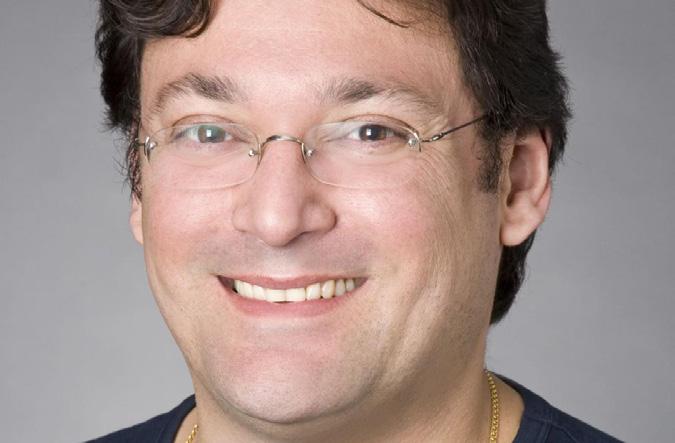
Andrea Silverman from the Department of Civil and Urban Engineering and Center for Urban Science and Progress was elevated to the rank of Institute Associate Professor, in recognition of her significant accomplishments in research, teaching, and service, and the expectation that she will be a leader in her field.
Faculty Recognition from Outside Organizations
Chen Feng — an Assistant Professor with appointments to Tandon’s Department of Civil and Urban Engineering, Department of Mechanical and Aerospace Engineering, Department of Computer Science and Engineering, and the Center for Urban Science and Progress — received a 2023 NSF CAREER Award for his use of robotics and AI to alleviate long-standing problems in occupational safety, productivity, costs, and labor shortages in the construction industry.
Elisa Riedo, Professor of Chemical and Biomolecular Engineering and Director of Tandon’s PicoForce Lab, has been elected to Academia Europaea (The Academy of Europe), an organization dedicated to excellence in scholarship in several branches of human endeavor, including mathematics, medicine, and all areas of natural and technological sciences for the public benefit.
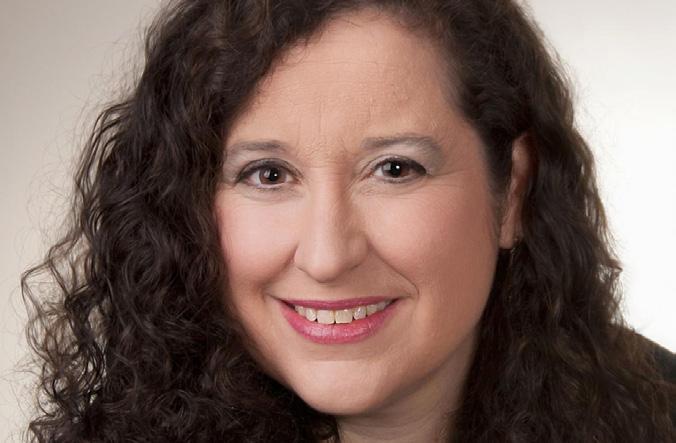
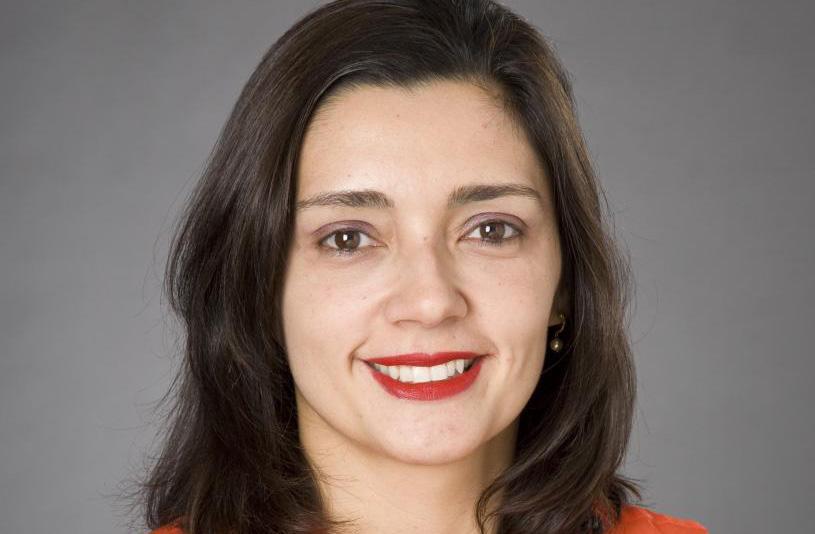
The IEEE VIS Test of Time Award was bestowed upon Juliana Freire, director of the Visualization Imaging and Data Analysis Center, and Claudio Silva, both Institute Professors of Computer Science, in recognition of previous research that is still vibrant and useful today and has had a major impact and influence within and beyond the data visualization community.
Professor of Civil and Urban Engineering Debra Laefer, who is also a faculty member of the Center for Urban Science and Progress, was elected as a Fellow of the International Association of Bridge and Structural Engineers and participated in the National Science Foundation Distinguished Speaker Series.

Ramesh Karri, Professor of Electrical and Computer Engineering and co-founder and co-chair of NYU’s Center for Cybersecurity, was named one of Intel’s outstanding researchers of the year.

Assistant Professor Danny Huang, of the Department of Electrical and Computer Engineering, Department of Computer Science and Engineering, Center for Cybersecurity, and Center for Urban Science and Progress, received a Google Cyber NYC Award.

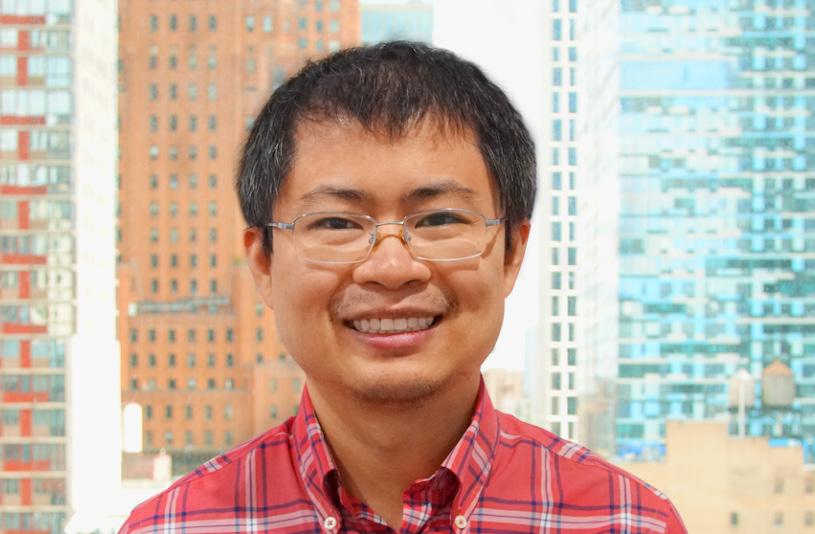
43
Andrea Silverman
Debra Laefer
Ramesh Karri
Danny Huang
Chen Feng
Juliana Freire
Claudio Silva
Assistant Professor of Chemical and Biomolecular Engineering
Ayaskanta Sahu was the recipient of a Director’s Award from the Defense Advanced Research Projects Agency.
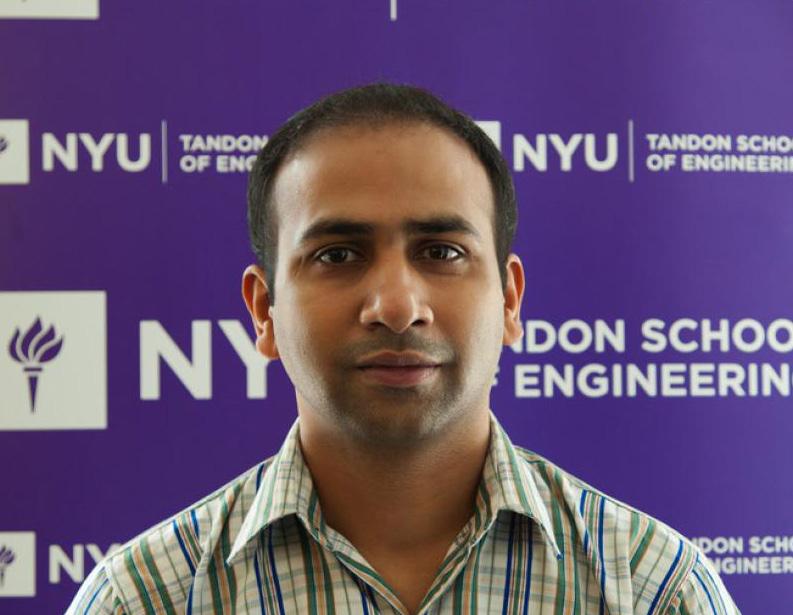
Professor of Chemical and Biomolecular Engineering Jin Kim Montclare garnered a Making Traction Award from the Women in Engineering Pro-Active Network (WEPAN), as well as an American Association of Colleges and Universities (AAC&U) Convergence Program Fellowship.
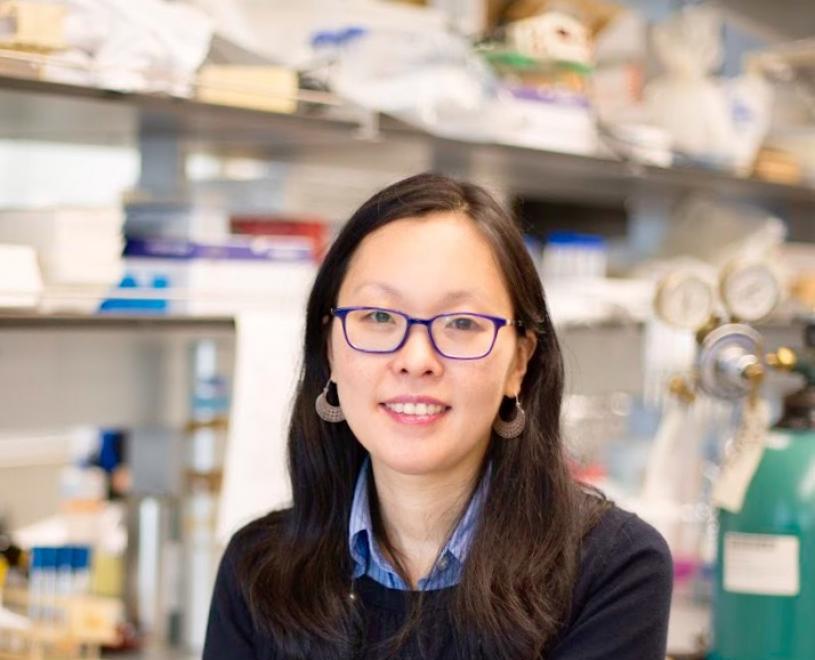
Professor of Electrical and Computer Engineering and Director of the New York State Center for Advanced Technology in Telecommunications Shivendra Panwar was named a Fellow of the National Academy of Inventors at the end of 2022.
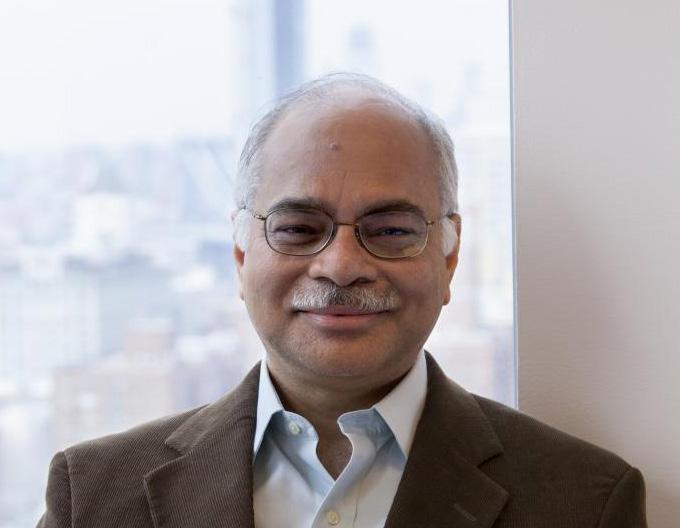
In November 2022, the IEEE Robotics and Automation Society and the RSJ Robotics Society of Japan chose Assistant Professor of Electrical and Computer
Engineering and faculty member of NYU WIRELESS Giuseppe Loianno to receive the International Conference on Intelligent Robots and Systems (IROS) Toshio Fukuda Young Professional Award, which is given annually to individuals still in the early stages of their careers who have made a major impact on intelligent robots and systems. That honor followed closely on the heels of his Young Faculty Award from the Defense Advanced Research Projects Agency (DARPA).
When Clarivate Analytics’ released its 2022 list of highly cited researchers in December, for the fourth year in a row, Thomas Marzetta, Director of NYU WIRELESS, and Founding Director Theodore “Ted” S. Rappaport, the David Lee/Ernst Weber Chaired Professor of Electrical and Computer Engineering at Tandon, were featured prominently.


Dean Emeritus Katepalli Sreenivasan was honored by the Hagler Institute of Advanced Studies (HIAS) and
the Departments Aerospace Engineering and Ocean Engineering at Texas A&M University, which organized a three-day conference to celebrate his career accomplishments. Sreenivasan was also honored with the prestigious ASME Medal, the highest award bestowed by the American Society of Mechanical Engineers.
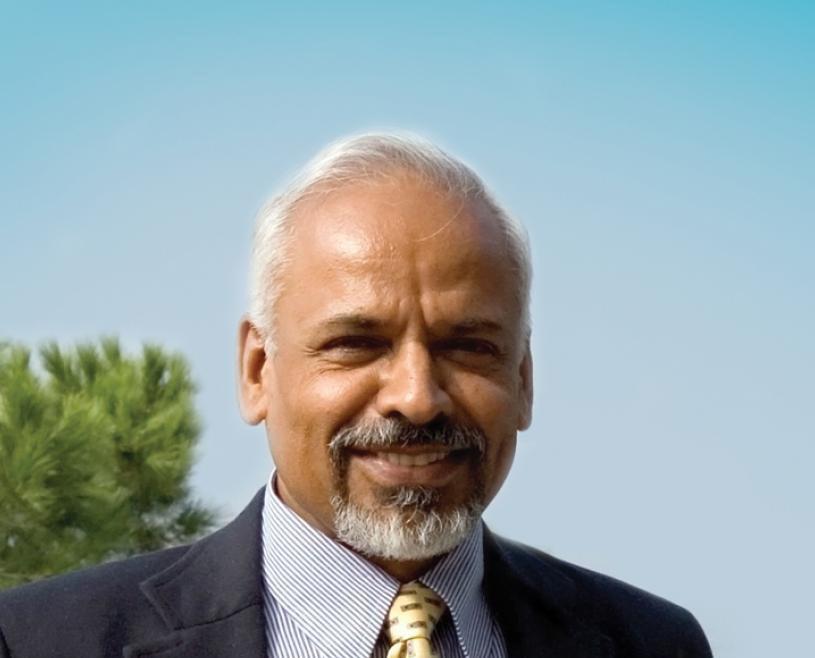
It was announced in December 2022 that NYU WIRELESS faculty member Marwa Chafii was the recipient of the Institute of Electrical and Electronics Engineers (IEEE) ComSoc Young Researcher Award for the Europe Middle East and Africa (EMEA) Region.
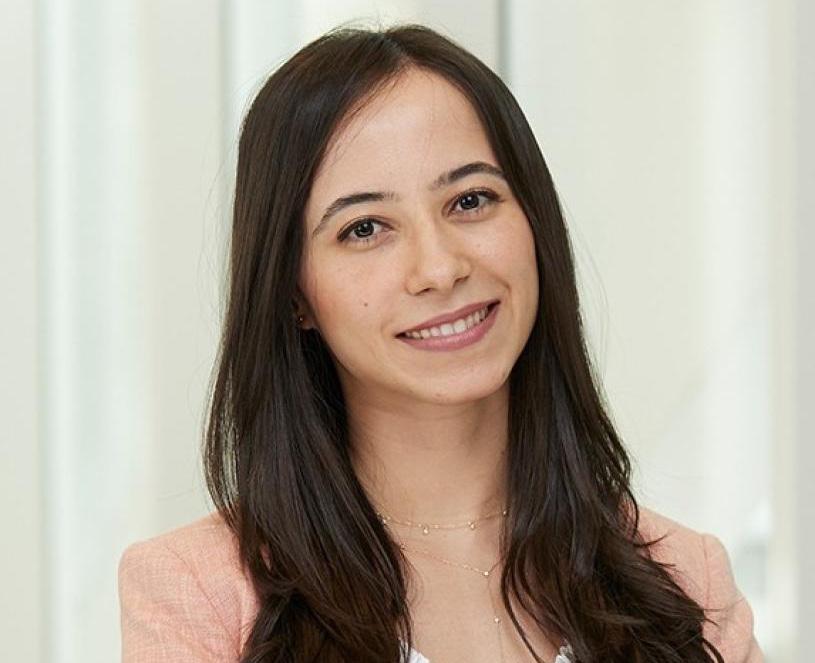
NYU TANDON UNCONVENTIONAL ENGINEER VOL. 4 44
Ayaskanta Sahu
Shivendra Panwar
Marwa Chafii
Katepalli Sreenivasan
Thomas Marzetta
Jin Kim Montclare
Theodore “Ted” S. Rappaport
Student Victories
This year, for the first time, NYU Tandon’s Rogue Aerospace, a rocketry team that’s part of the Vertically Integrated Projects program, won the $1,000 cash prize that comes with the American Institute of Aeronautics and Astronautics (AIAA) Reusable Launch Vehicle Award. That award is a component of the annual NASA Student Launch, a research-based, experiential project that invites colleges and universities across the nation to design, build, and fly payloads or vehicle components over the course of several months and then compete for various honors.
In April 2023, two student teams from Tandon’s Department of Finance and Risk Engineering made a first-place showing at the Twelfth Annual International Association for Quantitative Finance (IAQF) Student Competition, which asked participants to develop a highly profitable pairs trading strategy using a choice of any two widely recognized stock indexes, such as the DOW or S&P 500.
In early 2023, Minh Tran and Casey Bloomquist, both students in the Department of Chemical and Biomolecular Engineering at the time, garnered first-place honors and a cash award of $50,000 in the EnergyTech University Prize competition, sponsored by the U.S. Department of Energy’s Office of Technology Transitions.
Two teams of students from the Department of Technology Management and Innovation took first and second place in this year’s international Bayer Digital Campus Challenge, which asks teams of university students to envision the future of the pharmaceutical company in a digitally transformed, trustful healthcare ecosystem.

Our Alumni Successes
Shu Sun (‘18), a former graduate student at NYU WIRELESS and now a faculty member at the highly regarded Shanghai Jiao Tong University, won the IEEE Vehicular Technology Society 2023 Neil Shepherd Memorial Best Propagation Paper Award for “Propagation Models and Performance Evaluation for 5G Millimeter-Wave Bands” and the 2023 IEEE Vehicular Technology Society Early Career Award, for “fundamental contributions to the development of 5G millimeter-wave communications.”
Samantha Renshi Skinner (‘21), who earned her master’s degree from the Integrated Design & Media program, shared in the Short Film Grand Jury Prize at the Sundance Film Festival for the 13-minute work When You Left Me On That Boulevard, which she helped to produce.
Tanya Gupta (‘19) landed on the Forbes “30 under 30” list in the category of Art and Style: the first Indian American Adobe Creative Resident, she has edited more than 100 portrait editorials for Tom Ford Beauty, Disney, and others.
As the founder and CEO of Cresilon, makers of a revolutionary injectable plant-based gel that quickly stops traumatic bleeding, Joe Landolina (‘19) was also cited by Forbes, in the categories of both Healthcare and Big Money (for more, see page 17).
Miguel Guerrero (‘19), made the Forbes list in the category of Marketing and Advertising, thanks to his latest project, Otis AI, which helps small businesses advertise digitally in a post-COVID-19, increasingly online world.
45
TOP EMPLOYERS
Accenture
Alibaba
Amazon
Apple
Bank of America
Bloomberg
Boeing
Booz Allen
ByteDance
Capital One
CICC
Citi
Cold Spring Harbor Laboratory
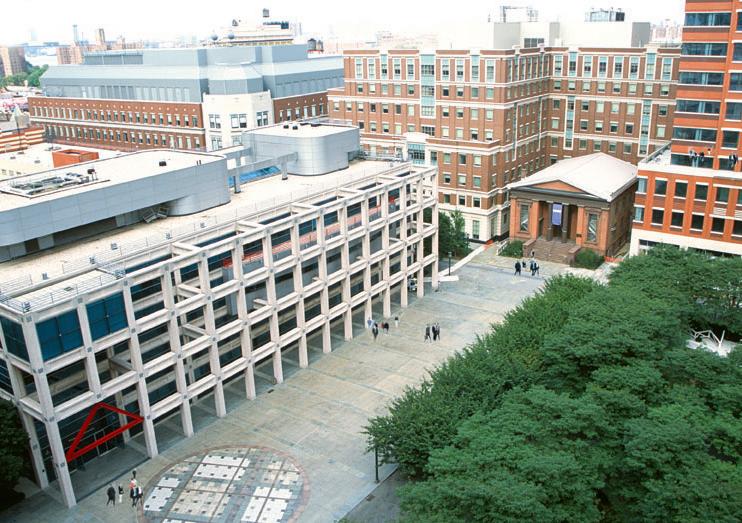
ConEdison
Deloitte
Entech
Estée Lauder
EY
General Dynamics
Goldman Sachs
Google
Huawei
IBM
Intuit
Jacobs Engineering
Juneau
KPMG
Lockheed Martin
Microsoft
Meta
Moody’s
mongoDB
Morgan Stanley
Nordstrom
Northrop Grumman
Ookla
Oracle
Pinterest
Port Authority of NY-NJ
Procter & Gamble
PWC
Redfin
Shopee
SpaceX Tencent
Tesla
Turner Construction
VMware
Rachel Barrera
Victoria Caswell
Sayar Lonial
Devon Preston
Lauren Ptak
Sharon Qi
Ingrid Redman
Mari Rich
Michael W. Richardson
Leah Schmerl
Sheldon Smith
NYU TANDON UNCONVENTIONAL ENGINEER VOL. 4 46
NYU TANDON MARKETING AND COMMUNICATIONS TEAM


1 Metrotech Center Brooklyn, NY 11201 engineering.nyu.edu | #NYUTandonMade









































 John-Ross Rizzo
John-Ross Rizzo




























































